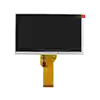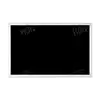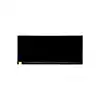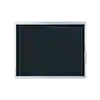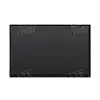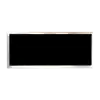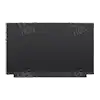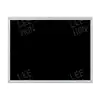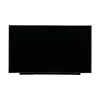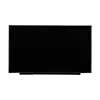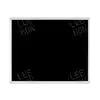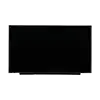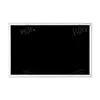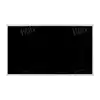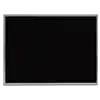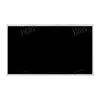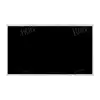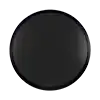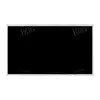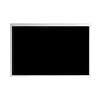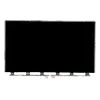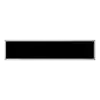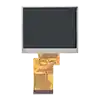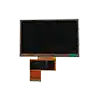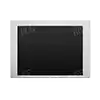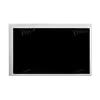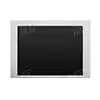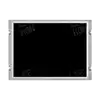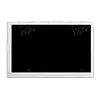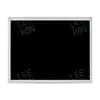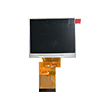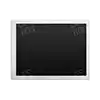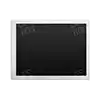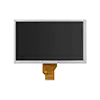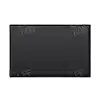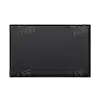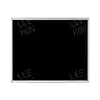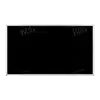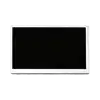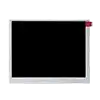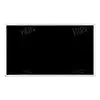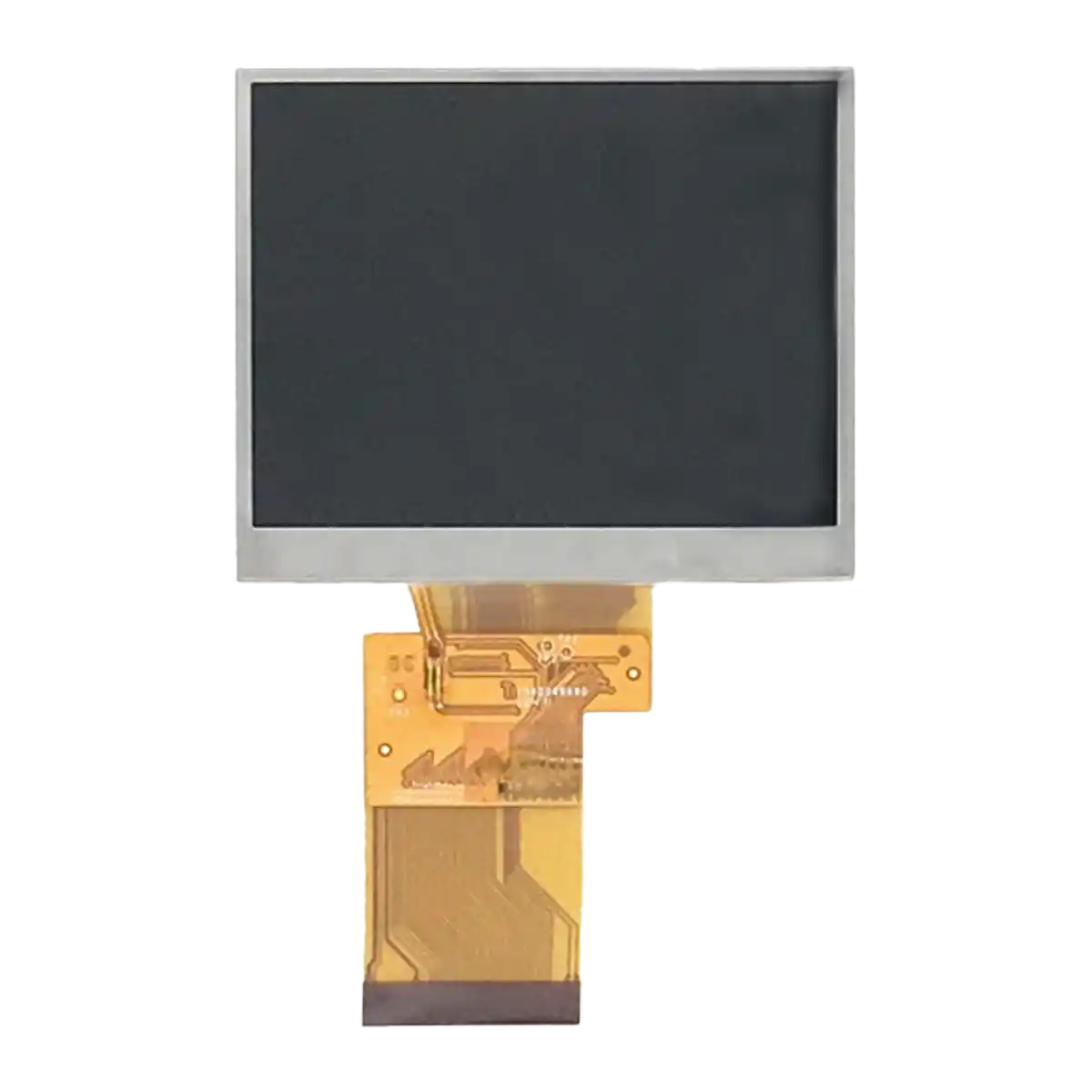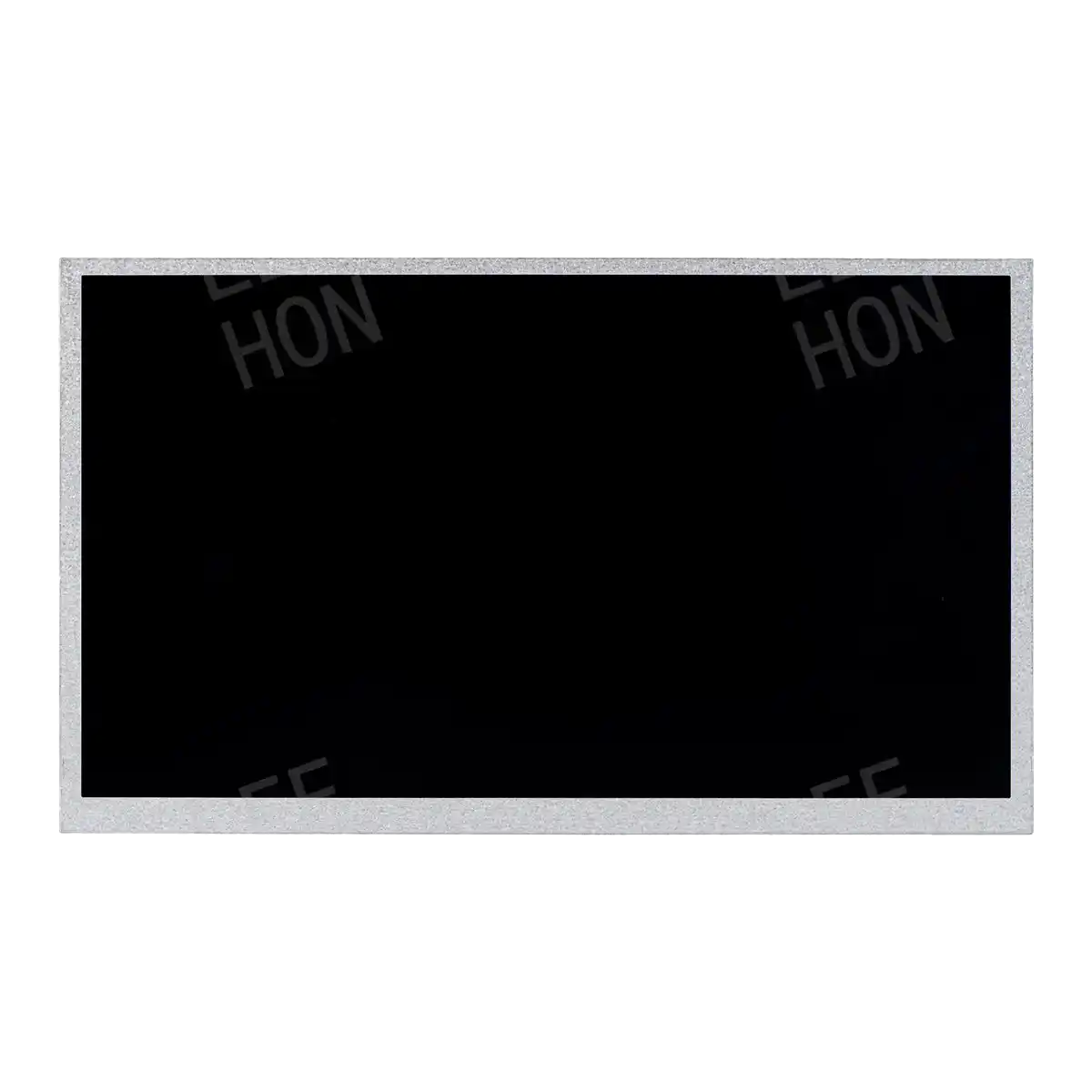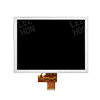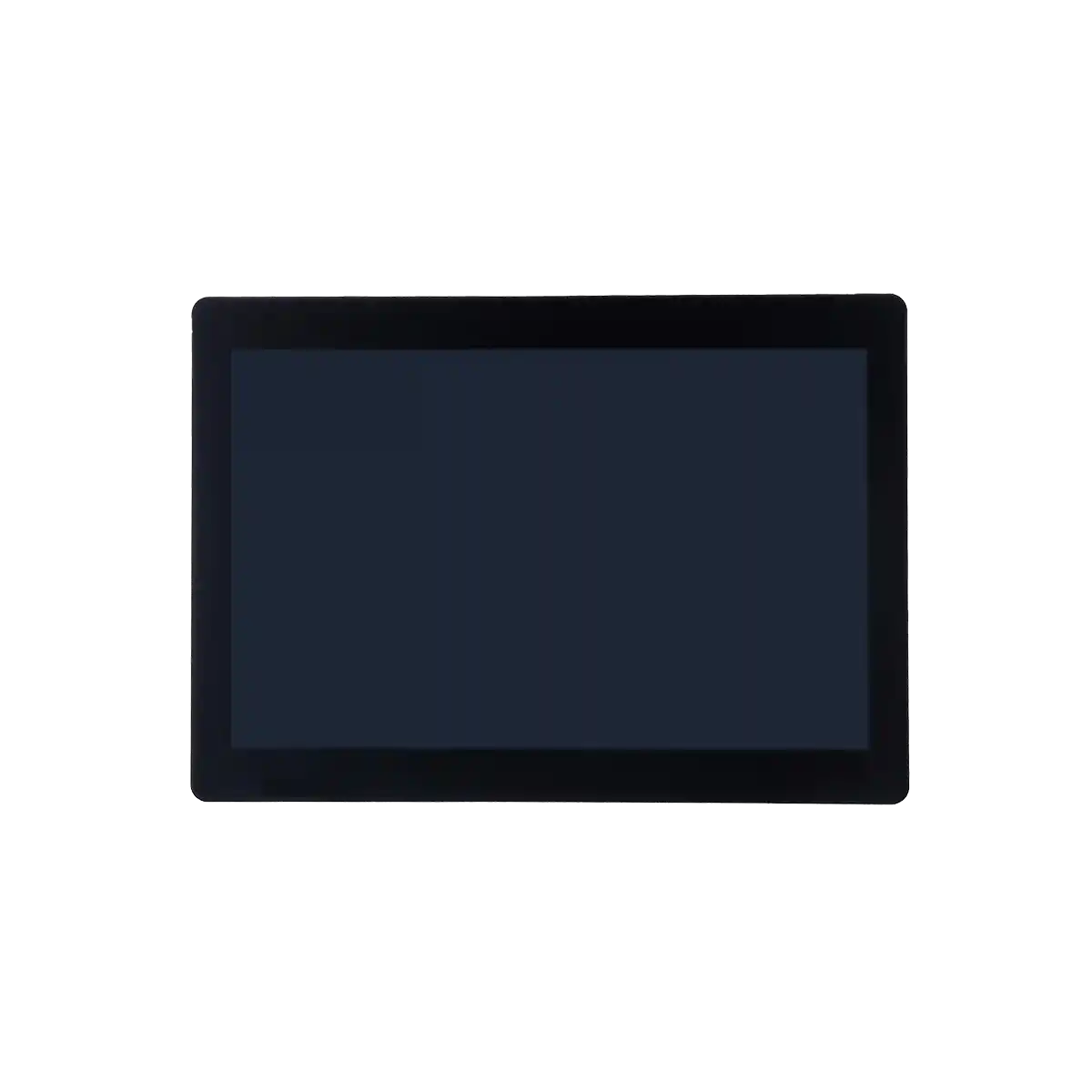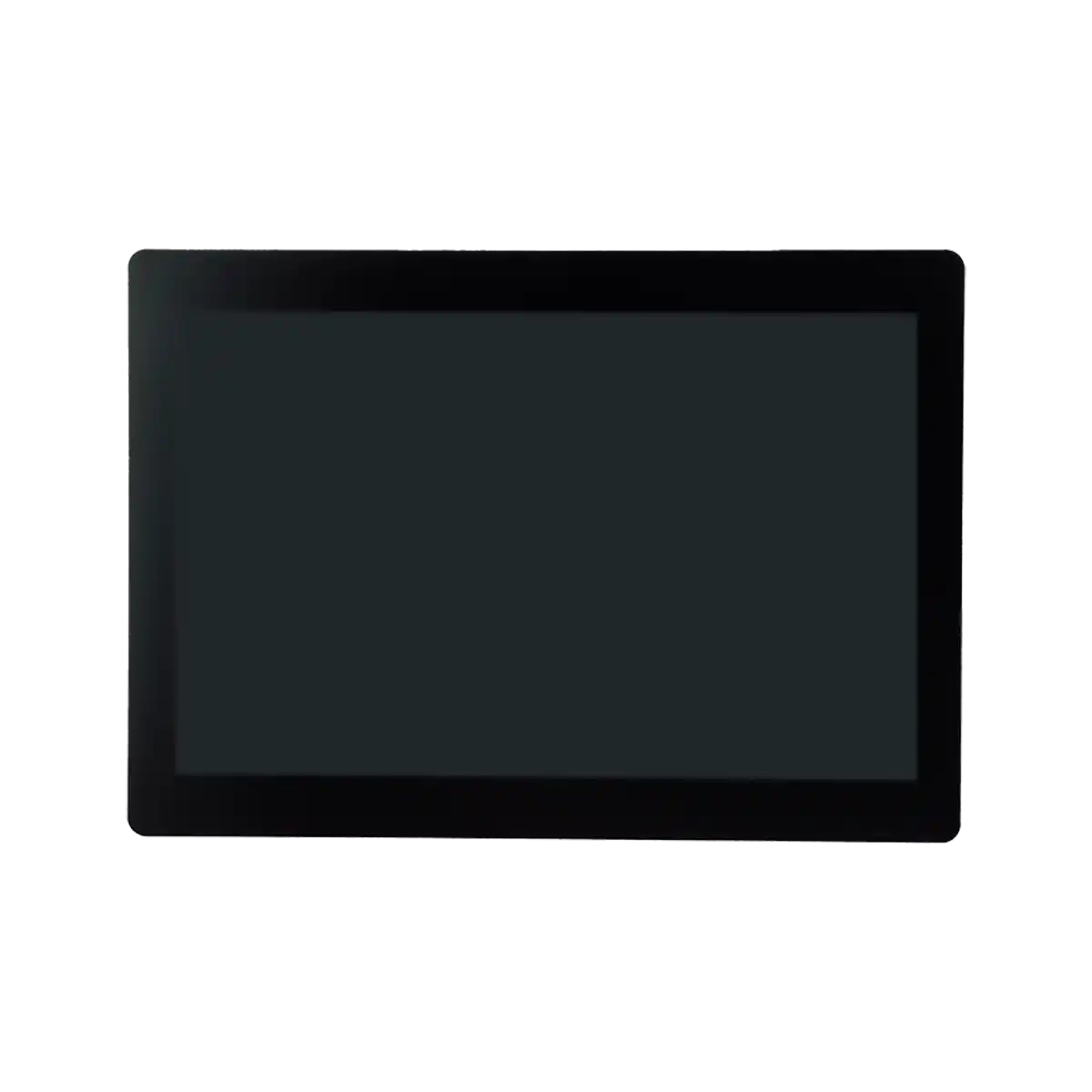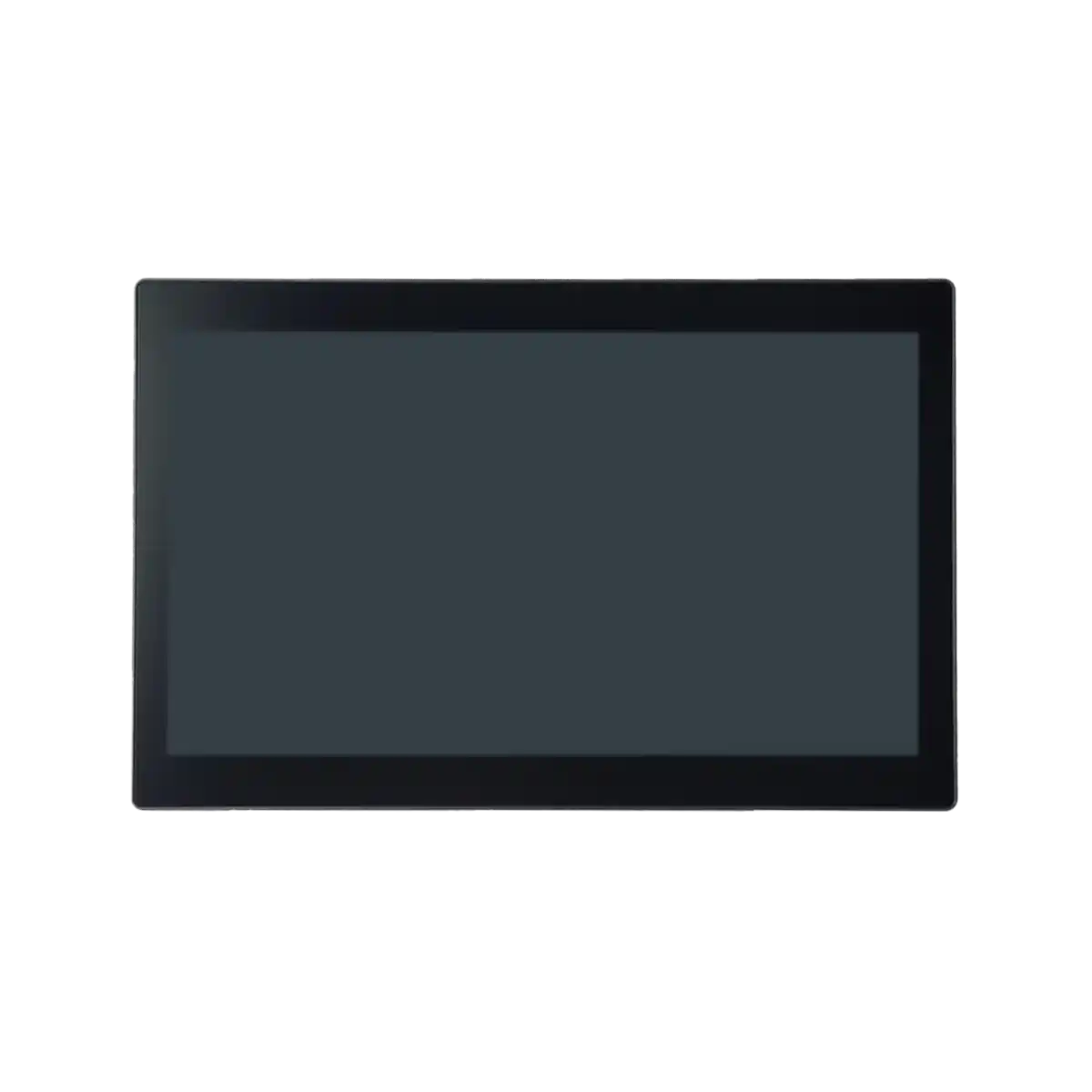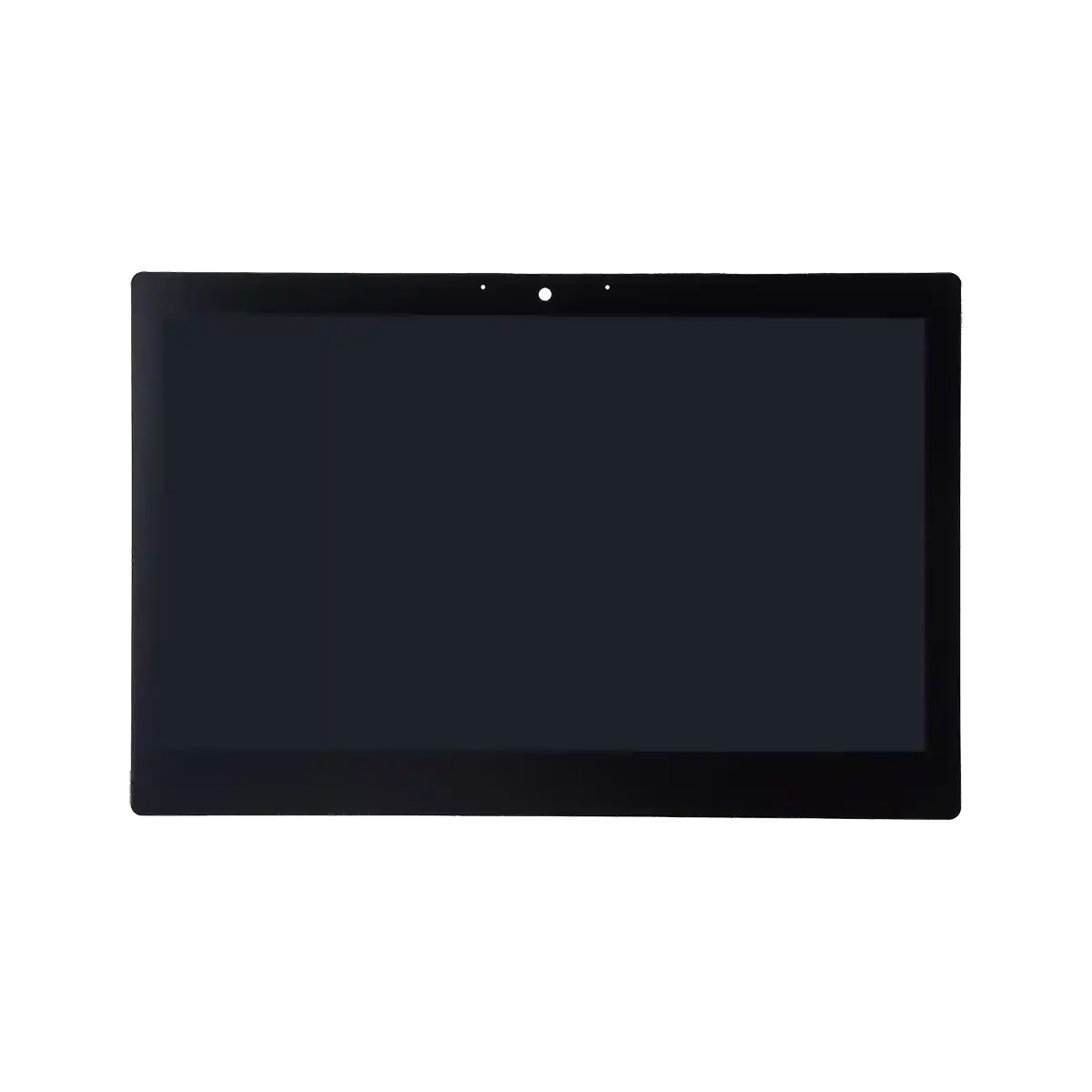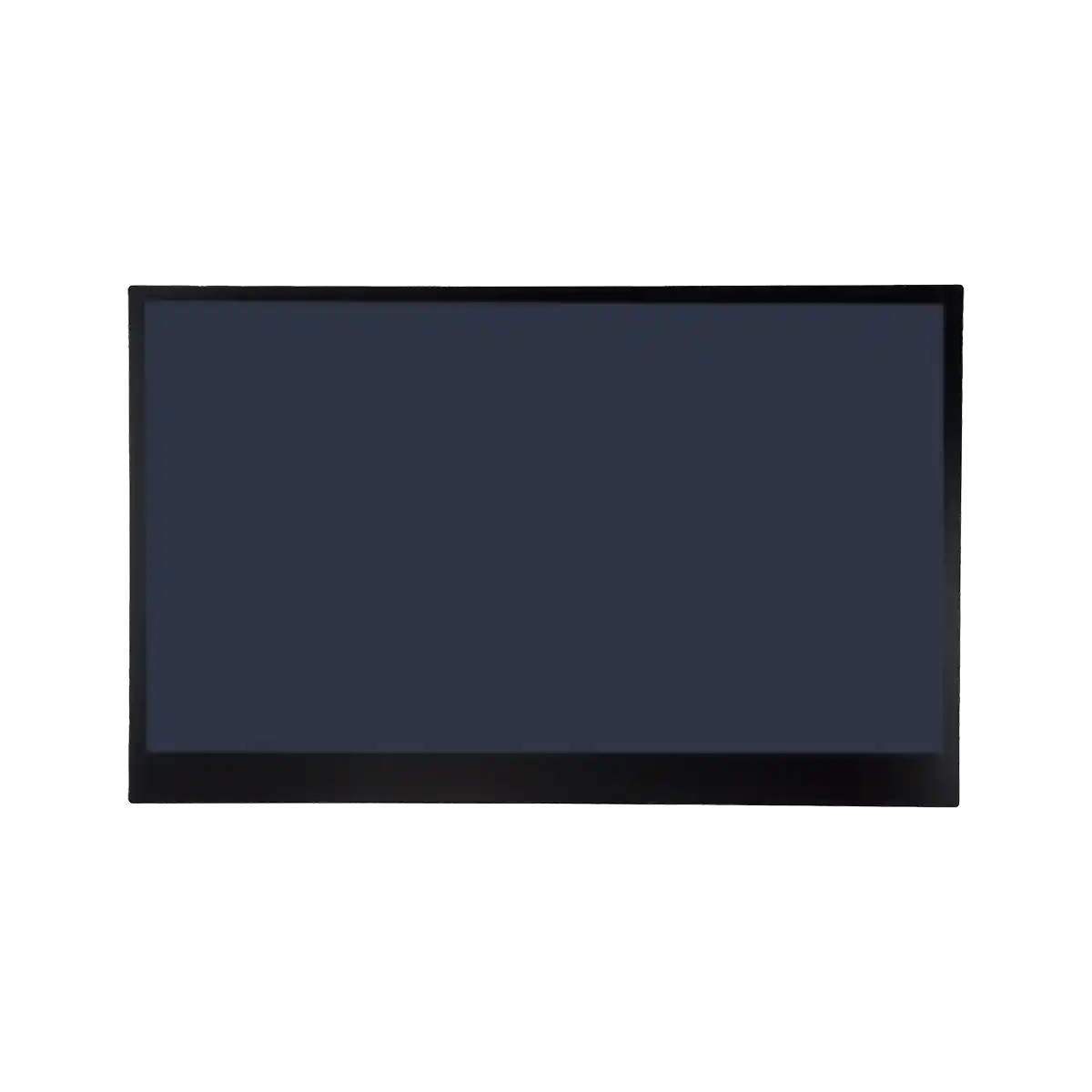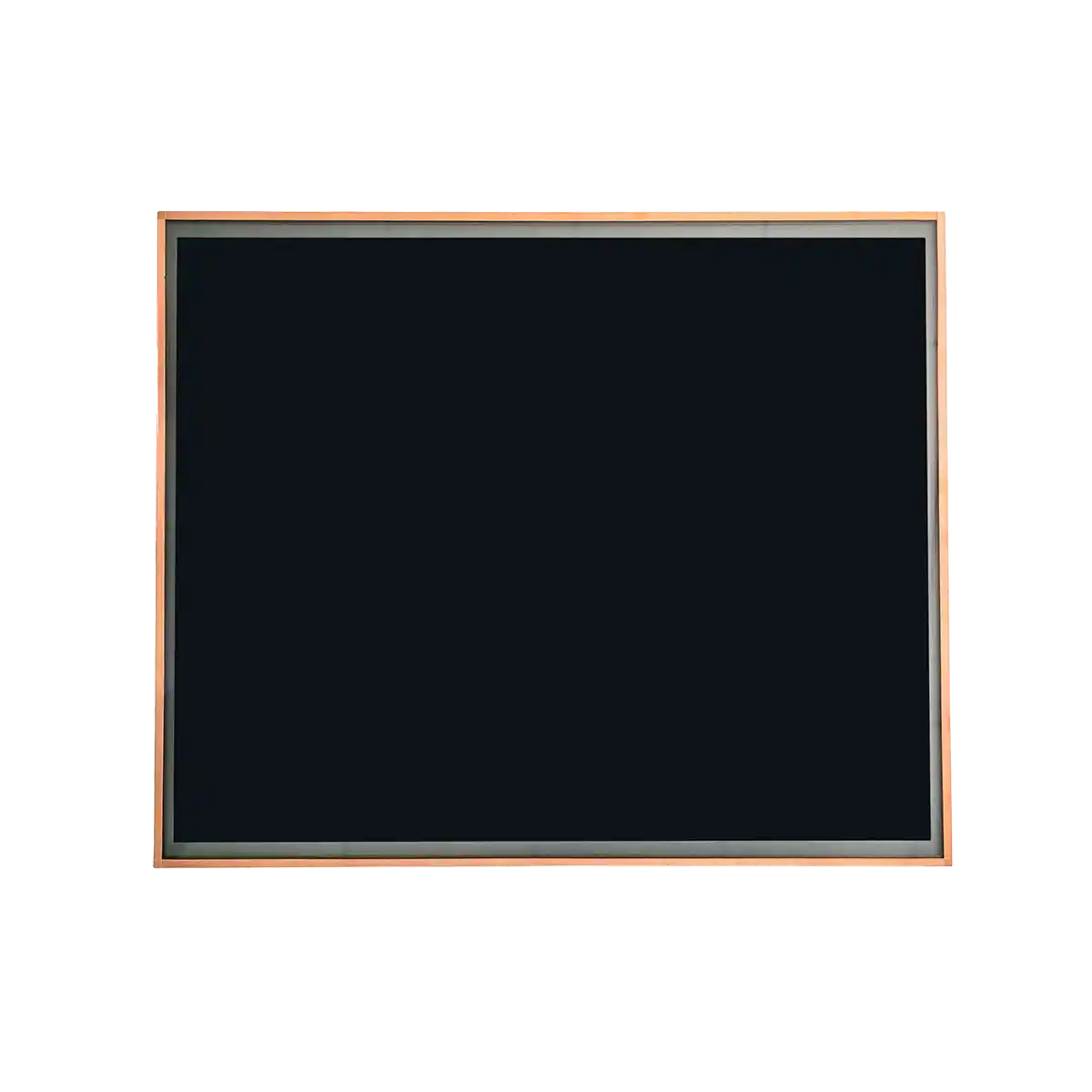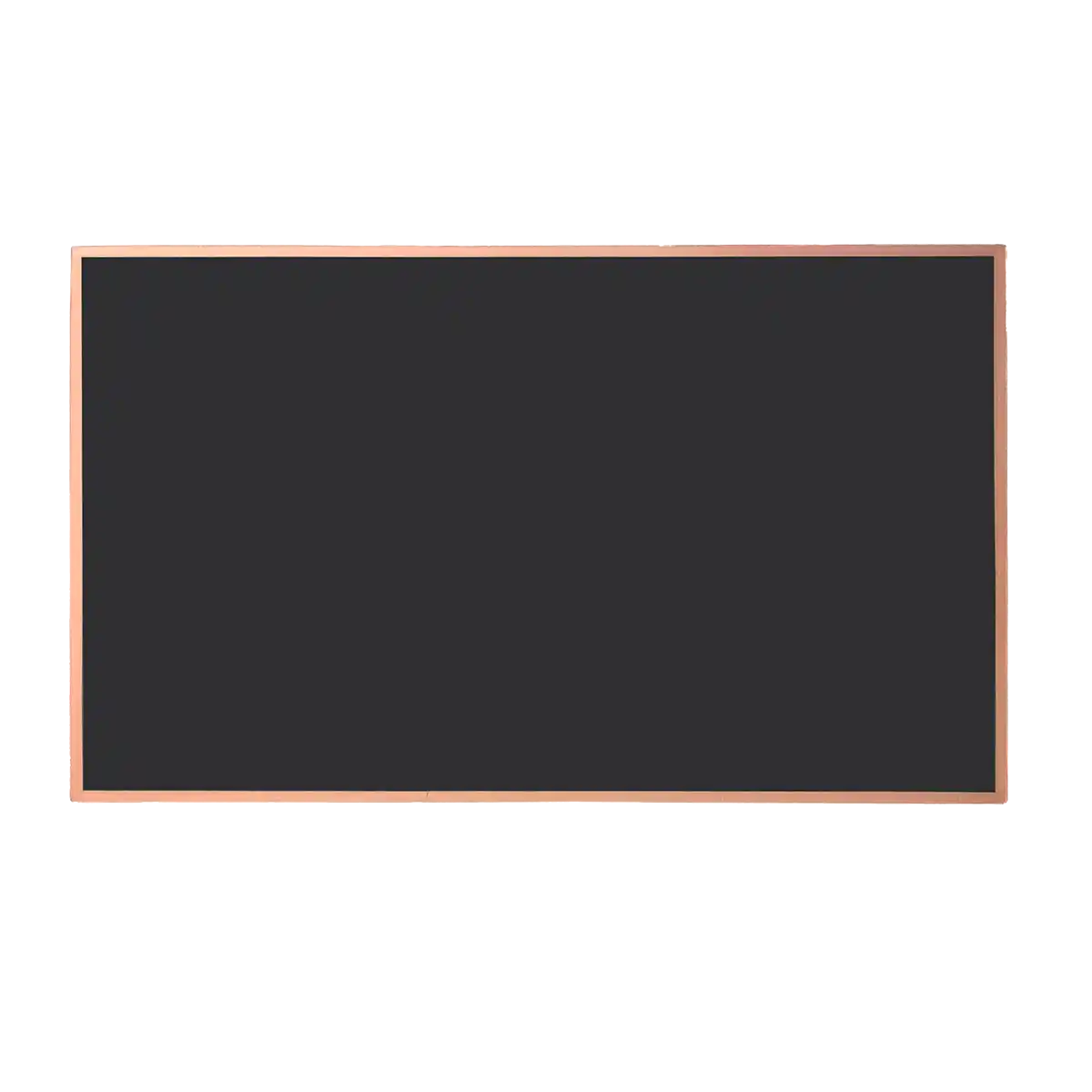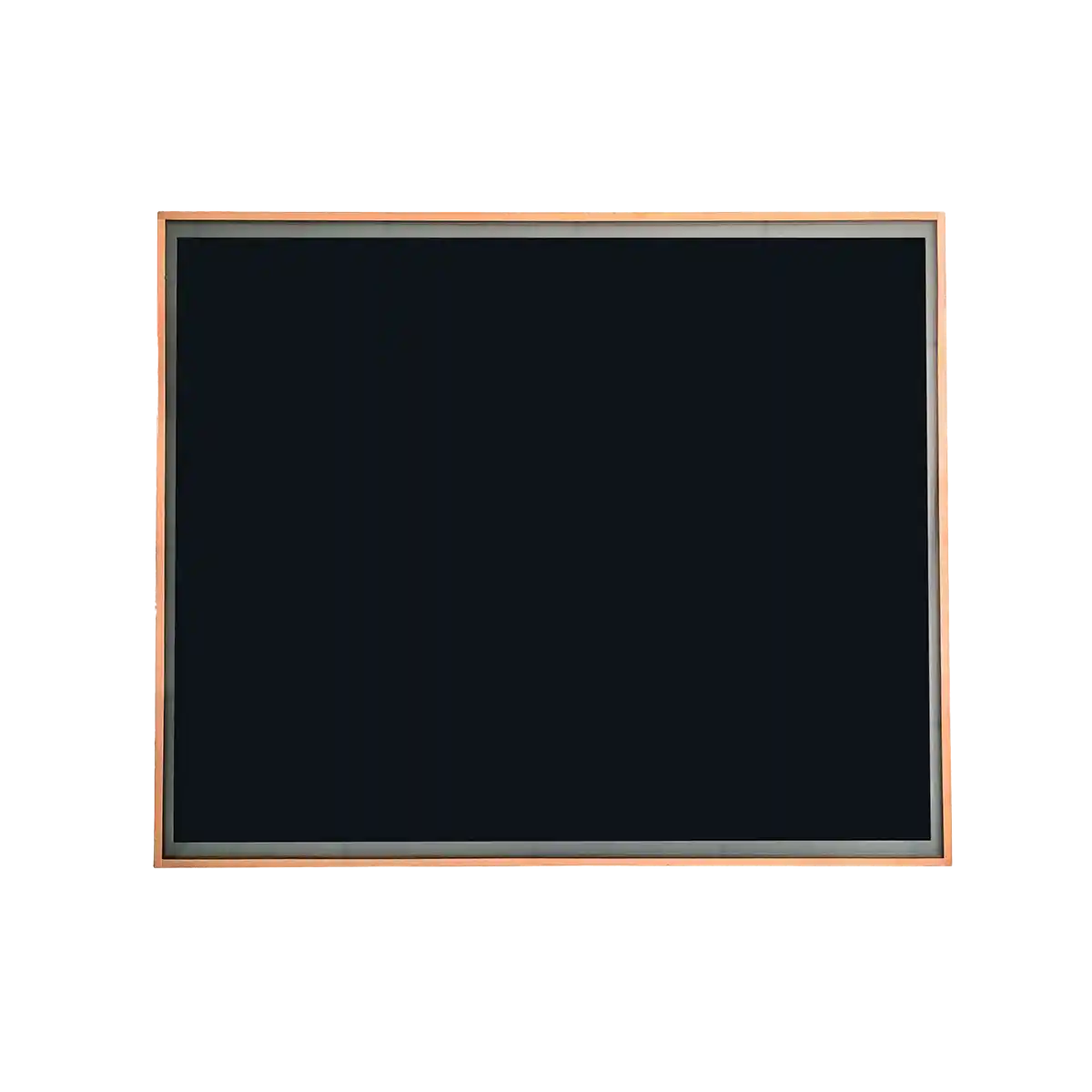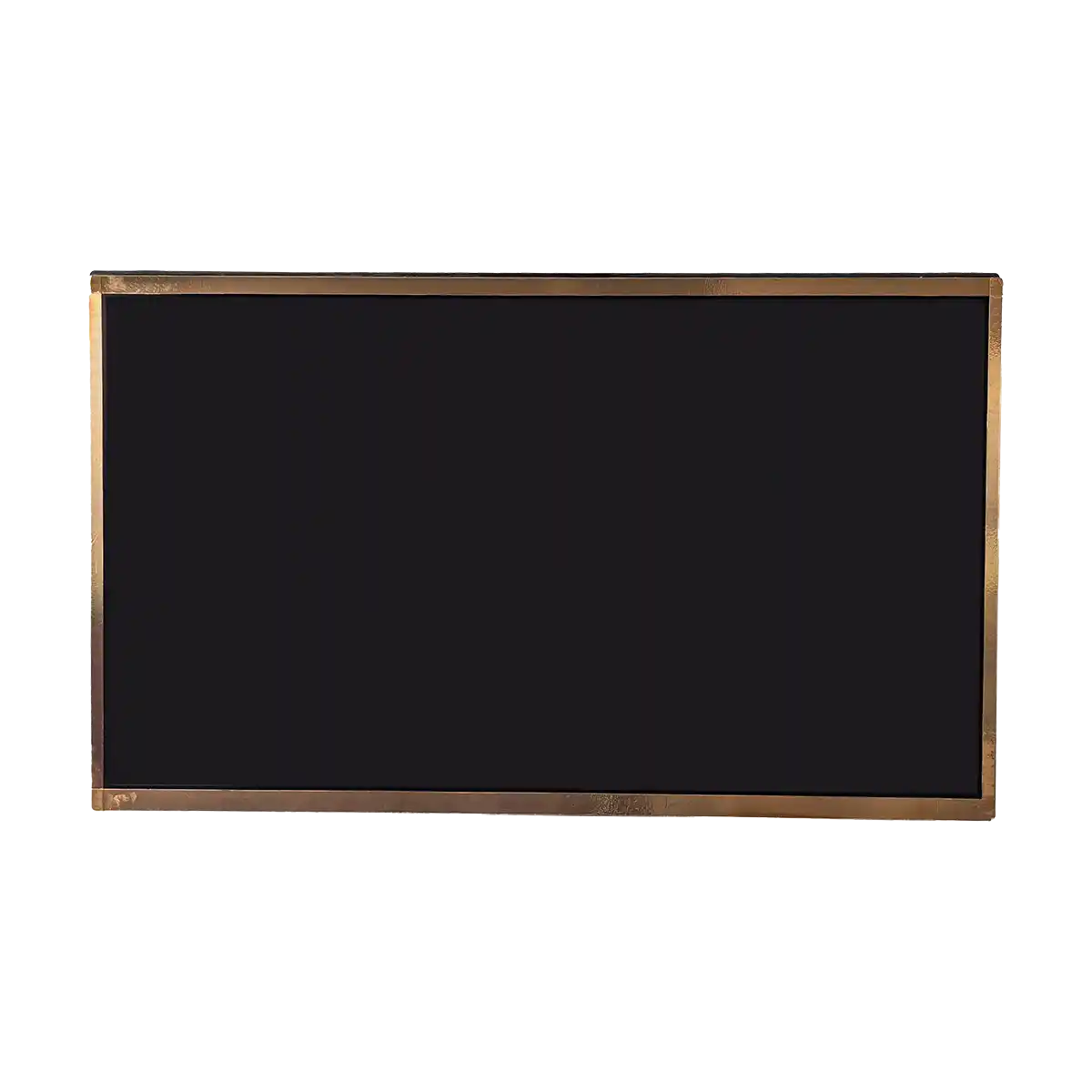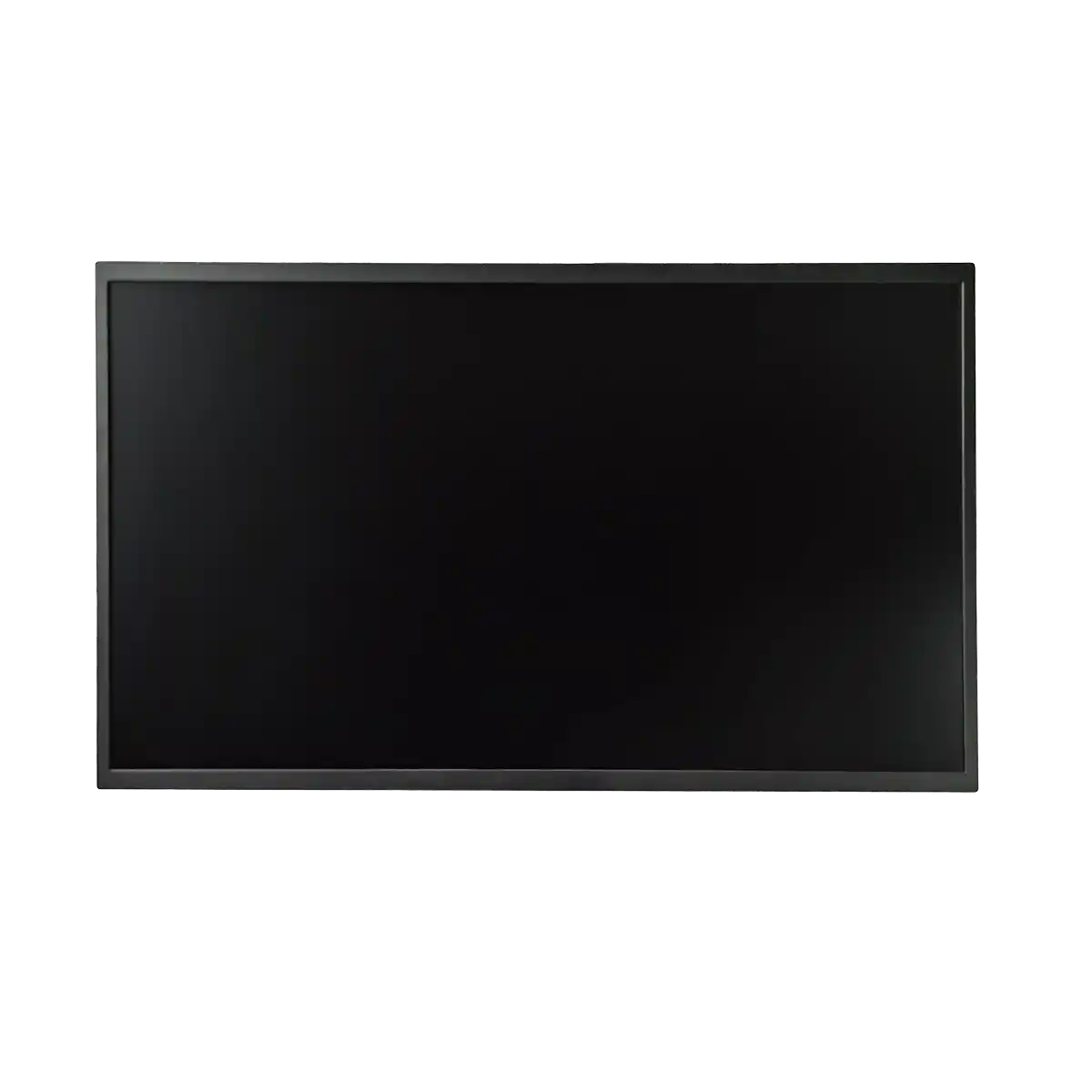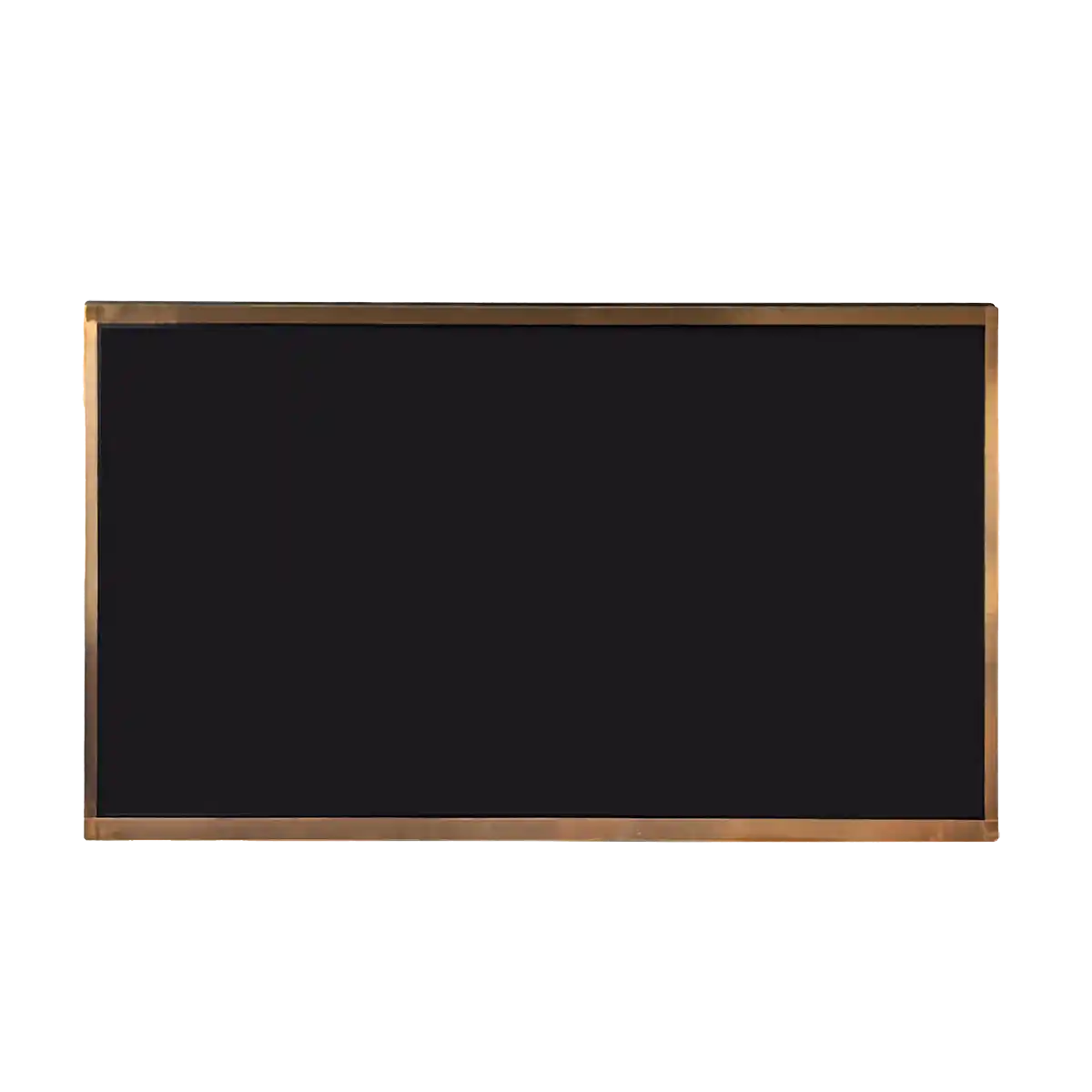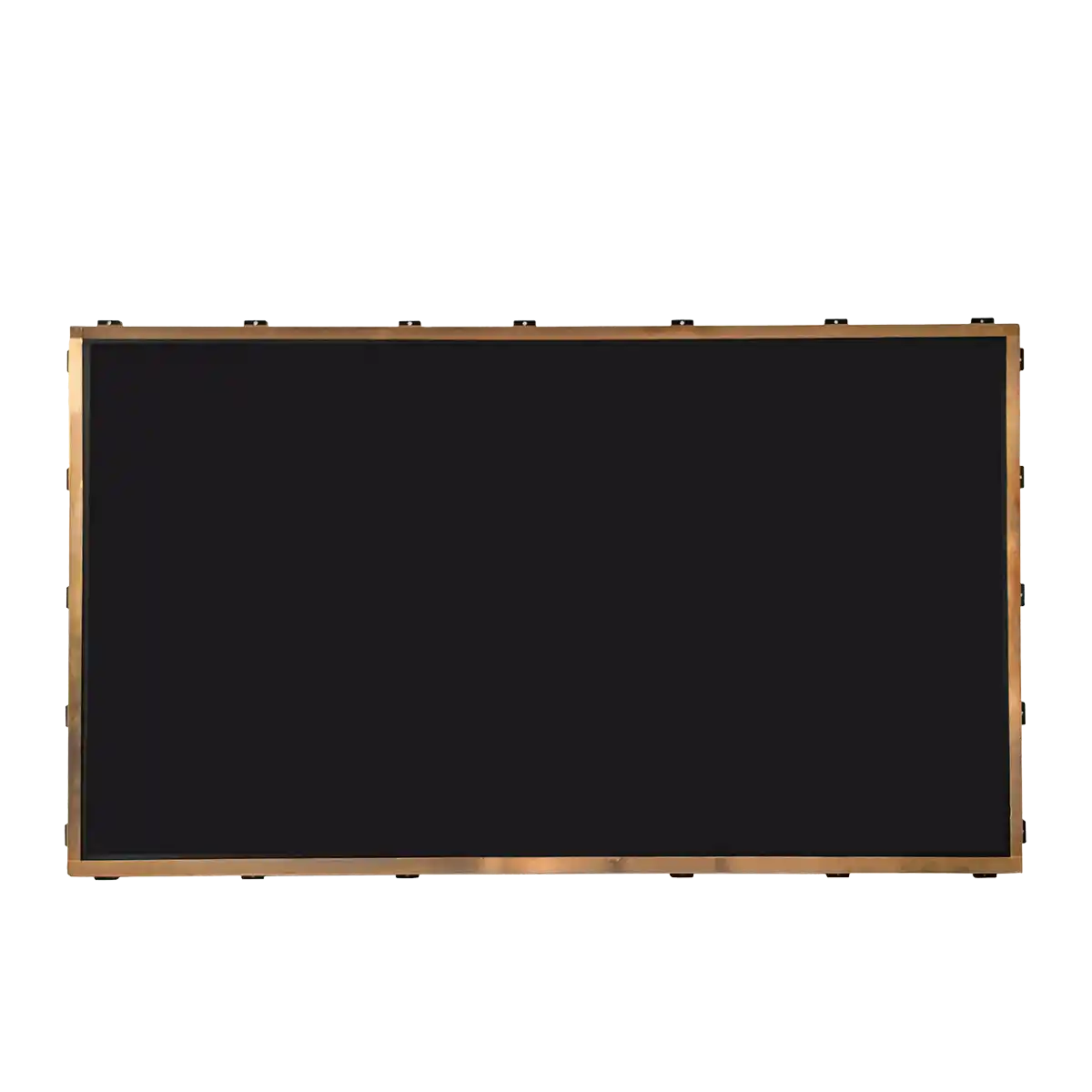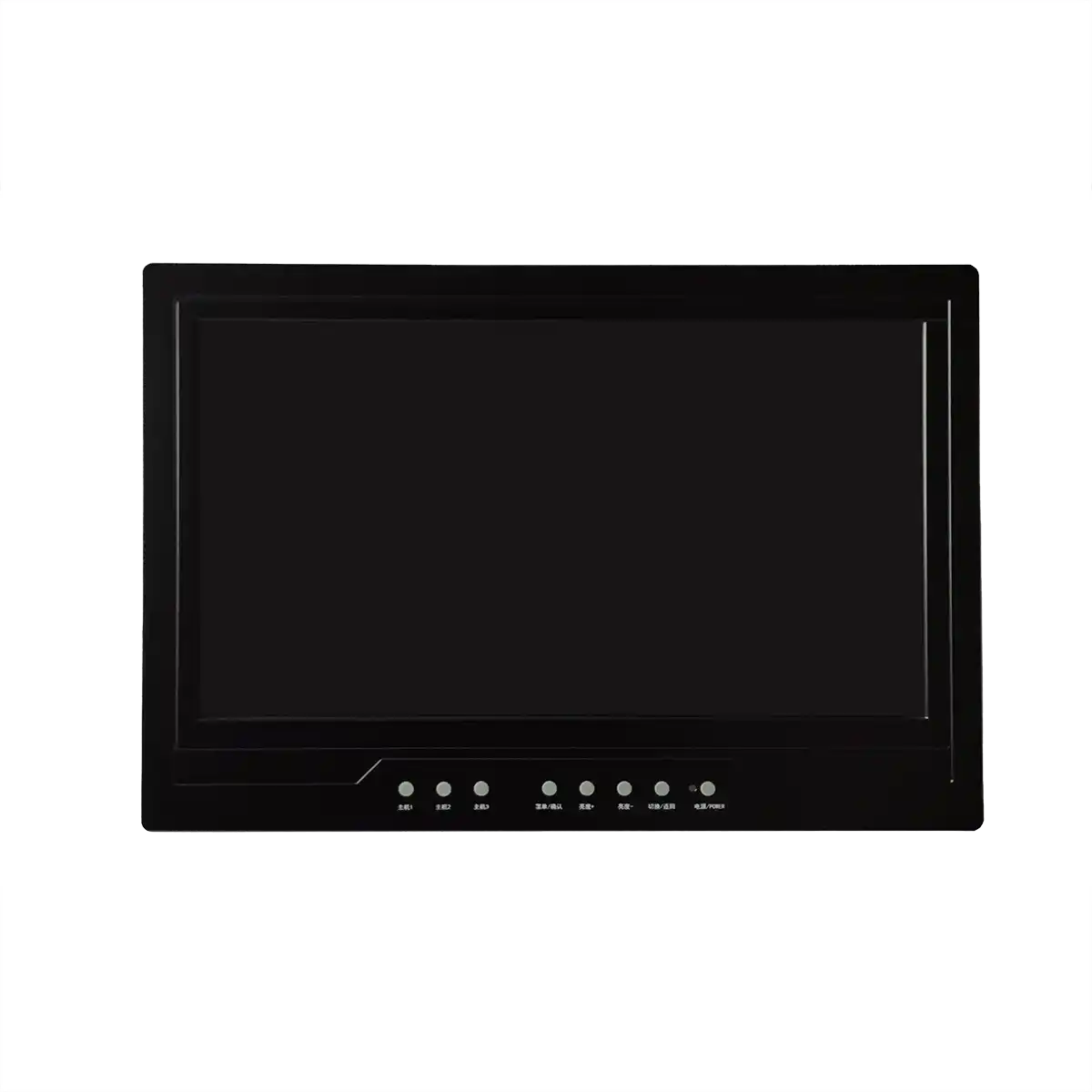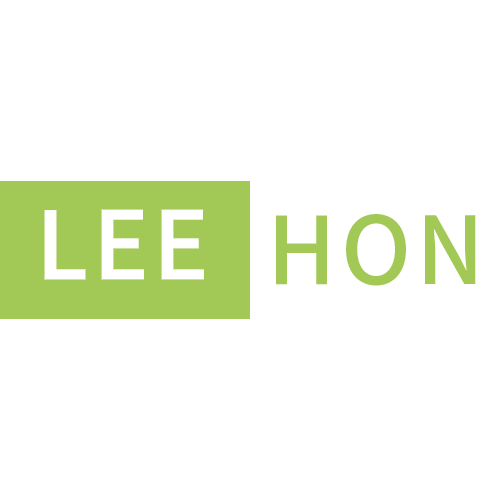Screen Selection and Solutions for Disinfection Robots —— A Case Study of G121XN01 V0
The disinfection robot market is experiencing rapid development and is widely used in medical, public transportation, commercial, and industrial settings, effectively improving disinfection efficiency and reducing the risk of cross-infection. This growth trend places urgent demands on the core components of robots, particularly the display screens of Human-Machine Interfaces (HMIs), for high performance and reliability. Disinfection robots typically operate in harsh environments, and their display screens must be able to withstand chemical corrosion, temperature and humidity changes, mechanical vibrations, and impacts, while ensuring clear display under various lighting conditions. This report aims to deeply analyze the special requirements of disinfection robots for display screens. Through a case study of AU Optronics (AUO)'s G121XN01 V0 and its upgraded G121XN01 V001 industrial-grade display screens, it will elaborate on their key technical specifications and application suitability. Building on this, the report will highlight advanced industrial and medical-grade display products from BOE Technology Group Co., Ltd. (BOE), a world-leading display panel manufacturer. Combined with Hangzhou LEEHON Technology Co., Ltd.'s (LEEHON) comprehensive solution capabilities in display module supply, touch integration, driver board matching, and customized services, this report will provide professional screen selection references and comprehensive solutions for professionals in the disinfection robot field, helping them develop more efficient and reliable disinfection robot products.
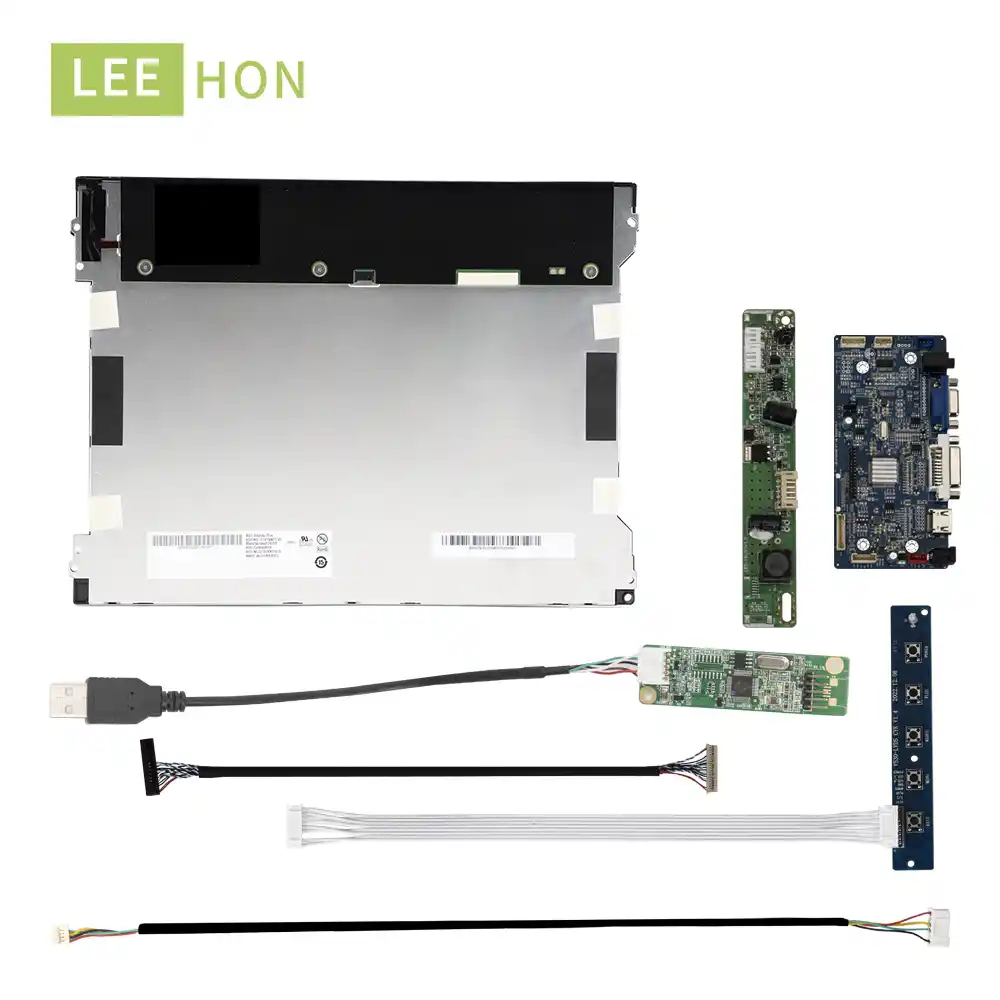
Table of Contents
I. Overview of the Disinfection Robot Industry and Its Unique Demands on Display Screens
A. The Rise of Disinfection Robots: Application Areas and Market Growth Trends
B. Human-Machine Interface (HMI) and Display Screens: Key to Efficient and Safe Operation of Disinfection Robots
C. Harsh Environments and Performance Challenges for Disinfection Robot Display Screens
II. Core Technical Indicators and Selection Considerations for Disinfection Robot Display Screens
A. Optical Performance: Ensuring Clear Information Visibility
B. Durability and Reliability: Adapting to Harsh Working Environments
C. Touchscreen Technology: Achieving Efficient Human-Machine Interaction
D. Interface and Integration: Ensuring System Compatibility
E. Compliance and Certification: Meeting Industry Standards
Table 1: Key Selection Indicators and Recommended Ranges for Disinfection Robot Display Screens
III. Case Study: Application of AUO G121XN01 V0 Industrial-Grade Display Screen in Harsh Environments
A. Introduction to AUO G121XN01 V0 and its Upgraded Model G121XN01 V001
B. Detailed Technical Specifications and Performance Benchmarks of G121XN01 V0 / V001
C. Applicability Analysis of G121XN01 V0/V001 in Disinfection Robot Applications
D. Screen Selection Experience Gained from the G121XN01 V0/V001 Case
Table 2: Detailed Specifications of AUO G121XN01 V0/V001 and Evaluation for Disinfection Robot Applications
IV. Advanced Screen Solutions for Disinfection Robots —— BOE Product Recommendations
A. BOE's Leading Technologies in Industrial and Medical Display Fields
B. Recommended BOE Display Screen Series for Disinfection Robots
C. Comparative Advantages of BOE Display Solutions
D. Customizing BOE Display Screens for Specific Disinfection Robot Application Scenarios
Table 3: Comparison of Key Parameters between G121XN01 V0/V001 and Recommended BOE Display Solutions
V. Hangzhou LEEHON Technology (LEEHON): Your Trusted Partner for Disinfection Robot Display Solutions
A. LEEHON Introduction: Professional Accumulation and Market Position in the Display Technology Field
B. LEEHON's Role and Value as a Core Agent for AUO and BOE
C. Comprehensive Solution Capabilities: Screen Supply, Touch Integration, Driver Matching, and Customization Services
D. Professional Technical Support and Value-Added Services
E. Why Choose LEEHON: Empowering the Disinfection Robot Industry
Table 4: Core Advantages of Hangzhou LEEHON Technology (LEEHON) Disinfection Robot Display Solutions
VI. Conclusion and Outlook
A. Review of Key Points for Disinfection Robot Screen Selection
B. Future Trends in Display Technology and Their Application Prospects in Disinfection Robots
C. Final Recommendations for Professionals in the Disinfection Robot Industry
Appendix
Contact Information for Hangzhou LEEHON Technology Co., Ltd.
I. Overview of the Disinfection Robot Industry and Its Unique Demands on Display Screens
A. The Rise of Disinfection Robots: Application Areas and Market Growth Trends
In recent years, with a significant global increase in awareness of public health and infection control, disinfection robots, as an efficient and autonomous cleaning and disinfection solution, are rapidly emerging. These robots can clean and disinfect public areas without manual intervention, making them an ideal choice for places with high foot traffic and strict hygiene requirements. Their application areas are extensive, having penetrated medical institutions (such as hospitals, clinics, long-term care centers) , public transportation hubs (such as airports, buses) , commercial venues (such as stadiums, shopping malls, schools, hotels) , and industries like biopharmaceuticals. This wide range of application scenarios means that disinfection robots need to operate stably in diverse environments. For example, hospital environments have extremely high requirements for cleaning protocols, while places like airports face high human traffic and potential physical impact risks.
Market analysis data clearly reveals the strong growth momentum of the disinfection robot market. According to a GrandView Research report, the global disinfection robot market size reached USD 3.6 billion in 2023 and is projected to grow at a compound annual growth rate (CAGR) of 19.2% from 2024 to 2030. Data from The Business Research Company also shows similar rapid growth, with the market size expected to grow from USD 1.59 billion in 2024 to USD 1.93 billion in 2025, at a CAGR of 21.2%, and is anticipated to reach USD 4.14 billion by 2029. This growth is primarily driven by increased awareness of hospital-acquired infections (HAIs), a growing emphasis on infection prevention, and the efficiency improvements and cost savings brought by automation technology.
The technology of disinfection robots itself is also constantly advancing. They employ various disinfection methods, including ultraviolet (UV-C) irradiation, electrostatic spraying, dry fogging, and hydrogen peroxide vapor. Among these, UV-C disinfection robots destroy the DNA of microorganisms by emitting high-intensity UV-C light, rendering them inactive. Many modern disinfection robots also integrate advanced artificial intelligence (AI) technology for autonomous navigation and path planning, as well as Internet of Things (IoT) technology for real-time monitoring and data reporting. This technological fusion, especially AI-driven navigation and IoT connectivity, means that robots require more complex control systems, and their human-machine interfaces (HMIs) need to be able to display richer information, such as maps, sensor data, and disinfection efficiency reports. Therefore, the display screen is no longer just a status indicator but an important component of the robot's intelligent system.
Furthermore, the market demand for "multifunctional robots" is increasing , indicating that display solutions need to have higher versatility and adaptability, capable of supporting different operating modes or tasks through software updates and configurable user interfaces (UIs). For example, a robot might need to switch between UV disinfection and spray disinfection modes, or even perform other tasks like item delivery, which requires its HMI to be flexible. Concurrently, the application of disinfection robots is expanding from the healthcare sector to more industries like airports and hotels , meaning that display screens not only need to meet the stringent requirements of clinical or industrial environments but may also need to consider aesthetic design, wider public information viewing angles, or interactive content display capabilities, potentially leading to a segmentation of display screen demands based on the primary application field.
B. Human-Machine Interface (HMI) and Display Screens: Key to Efficient and Safe Operation of Disinfection Robots
The Human-Machine Interface (HMI) and its core component, the display screen, are crucial for ensuring the efficient and safe operation of disinfection robots. The HMI undertakes multiple tasks such as robot setup, operational monitoring, status reporting (for example, the OhmniClean robot screen can directly display disinfection reports ), and maintenance diagnostics. In special scenarios like disinfection robot operations, operators may be wearing personal protective equipment (PPE) or be in potentially high-pressure environments, making an intuitive and clear visual feedback interface essential.
The quality of the display screen directly impacts user experience, operational efficiency, and can effectively reduce misoperations. Clear images, timely status updates, and easy-to-understand icons and instructions help operators quickly grasp the robot's status and make correct decisions. Conversely, a poorly designed or underperforming display screen not only reduces the robot's efficiency but can also lead to safety hazards. As the intelligence level of disinfection robots increases, the role of the HMI becomes more prominent, evolving from a simple information output window to a complex interactive command and control center.
C. Harsh Environments and Performance Challenges for Disinfection Robot Display Screens
The working environment of disinfection robots is often complex and challenging, imposing stringent requirements on the durability and performance of their display screens:
- Chemical Exposure: Disinfection robots and their display surfaces frequently come into contact with various chemical disinfectants, such as hydrogen peroxide, sodium hypochlorite, and hypochlorous acid , as well as strong cleaning agents used for equipment surfaces. The display screen and its housing materials must possess excellent chemical resistance to prevent material degradation, discoloration, or functional failure. For instance, RTP Company has developed RTP 2000 HC specialty polyester alloy materials designed to resist corrosion from common hospital cleaners. This chemical resistance is not only a requirement for the housing material but also directly influences the choice of touchscreen surface, protective layers, and adhesives.
- Temperature and Humidity Extremes: Disinfection robots may operate in different climatic conditions, requiring their display screens to adapt to a wide range of temperatures and humidity. For example, some UV disinfection robots require an operating environment temperature between -15°C and 45°C, with humidity below 80% ; the Keenon M2 robot has an operating temperature range of 0°C to 45°C (32°F - 113°F) and a relative humidity of 5% - 85%. Display screens must maintain stable performance and a long service life under these conditions.
- Shock and Vibration: As mobile devices, disinfection robots may encounter uneven ground or accidental collisions during movement. Therefore, display screens need to have a certain degree of shock and vibration resistance. For example, the AUO G121XN01 V0 display screen has a vibration resistance specification of 1.5G.
- Cleanability and Sterility: Particularly in medical environments, the display screen surface must be easy to clean to prevent microbial accumulation and withstand routine disinfection and sterilization processes. Designs such as smooth, seamless surfaces (e.g., zero-bezel design ), and antibacterial coatings help meet these hygiene requirements.
- Readability: Disinfection robots may operate in environments with varying light conditions, from bright public halls to dimly lit patient rooms. Display screens must have sufficient brightness, contrast, and anti-reflective capabilities to ensure clear information visibility under all lighting conditions.
These harsh environmental factors collectively pose significant challenges for the selection of display screens for disinfection robots, requiring suppliers to provide highly durable, reliably performing, and easily integrated display solutions.
II. Core Technical Indicators and Selection Considerations for Disinfection Robot Display Screens
To meet the demands of disinfection robots in complex application scenarios, the selection of their display screens must comprehensively consider a series of core technical indicators. These indicators not only relate to display effects but also directly impact the robot's reliability, durability, and user interaction experience.
A. Optical Performance: Ensuring Clear Information Visibility
- Luminance: Measured in cd**/m2** (candelas per square meter) or nits. Disinfection robot display screens require sufficient brightness to adapt to different ambient light conditions. For example, AUO G121XN01 V0 offers a typical brightness of 500 nits , while general industrial displays typically have a brightness of 350 nits or more. When selecting, the display brightness and backlight lifespan should be carefully evaluated.
- Contrast Ratio: A high contrast ratio helps improve image detail and text clarity, which is crucial for information readability. The G121XN01 V0 has a contrast ratio of 700:1.
- Viewing Angles: Wide viewing angles (e.g., 80/80/80/80 for G121XN01 V0 ) ensure that operators can clearly observe the displayed content from multiple positions not directly in front of the screen.
- Resolution and Aspect Ratio: The resolution needs to match the amount of information displayed, such as the XGA (1024x768) resolution of G121XN01 V0. Common aspect ratios are 4:3 and 16:9.
- Color Accuracy and Gamut: Crucial for clear status indications (e.g., different colored alarms) and graphical user interfaces (GUIs). The G121XN01 V0 has an NTSC color gamut of 71%.
B. Durability and Reliability: Adapting to Harsh Working Environments
- Operating Temperature Range: Wide temperature operation capability is a core requirement. The G121XN01 V0 has an operating temperature range of -30°C to +85°C.
- Storage Temperature Range: Equally important to ensure the integrity of the device when not in operation, the G121XN01 V0 has a storage temperature range of -30°C to +85°C.
- Ingress Protection (IP) Rating: Measures the device's protection against dust and liquid intrusion, particularly critical for environments requiring frequent cleaning and disinfection. Some industrial displays have a front IP65 protection rating. Standards like NEMA 250 or UL 50 can be used to assess protection in wash-down environments.
- Shock and Vibration Resistance: Ability to withstand movement and potential collisions, such as the 1.5G vibration resistance specification of G121XN01 V0.
- Chemical Resistance: The materials and coatings of the display screen must be able to resist corrosion from disinfectants and cleaning agents. For example, materials like PEEK and PPS exhibit good chemical resistance under various sterilization methods.
- Backlight Lifespan: A longer Mean Time Between Failures (MTBF) can reduce maintenance costs and downtime. The WLED backlight of G121XN01 V0 has a lifespan of up to 50,000 hours.
C. Touchscreen Technology: Achieving Efficient Human-Machine Interaction
- Types: Projected Capacitive (PCAP) touchscreens are common due to their support for multi-touch and better optical clarity. Resistive touchscreens perform better in environments where operators wear gloves or where liquid splashes occur.
- Multi-touch Support: Suitable for more complex interactions and gesture operations.
- Glove Operation: Crucial for operators wearing Personal Protective Equipment (PPE). This requires specific touch controller tuning, or the use of special technology (like conductive threads in gloves ), or selecting resistive touchscreens. Some PCAP touchscreens can also be customized to support glove operation.
- Surface Treatments: Anti-glare (AG), anti-reflection (AR), anti-fingerprint (AF) coatings can improve visibility and maintain cleanliness. Hard coatings (like the 3H hardness coating of G121XN01 V0 ) can improve scratch resistance.
- Controller ICs: Reliable touch controller chips (e.g., from brands like EETI, ILITEK ) are critical for touch performance.
When choosing touch technology, a balance needs to be struck between advanced interactive experiences (like PCAP's multi-touch) and robustness in harsh environments (like glove operation and chemical resistance). Some applications may prioritize advanced interaction, while others (especially in chemically exposed environments) may opt for more rugged, possibly simpler touch solutions like resistive or specially treated PCAP. Efforts to customize PCAP for glove operation are attempting to bridge this gap.
D. Interface and Integration: Ensuring System Compatibility
- Display Interfaces: Common industrial panel interfaces include LVDS (as in G121XN01 V0 ), eDP, HDMI, MIPI, etc..^22^ Controller boards play an important role in signal conversion, for example, converting HDMI signals to LVDS signals.^22^
- Driver Boards: Driver boards need to match the interface, resolution, and power requirements of the display panel. Hangzhou LEEHON Technology (LEEHON) can provide matching HDMI driver boards and LVDS cables. VSDISPLAY also offers LVDS driver controller boards.
- Power Supply: A stable power supply is crucial. The G121XN01 V0 panel itself has an operating voltage of 3.3V , while driver boards may have different input voltage requirements.
- Mechanical Integration: Installation methods need to consider the device structure, such as the panel mounting holes of G121XN01 V0 , and common industrial display mounting options like VESA mount, embedded mount, etc..
The increasing prevalence of IoT and AI technologies in disinfection robots suggests that future display screens may require embedded processing capabilities or seamless high-bandwidth connections to powerful onboard computers. This could drive demand for smarter display modules or those with more advanced interface options (like eDP or even direct MIPI) for tighter system integration. The display system will become an integral part of the robot's data network, and its interface choices will extend beyond traditional LVDS.
E. Compliance and Certification: Meeting Industry Standards
- Industrial Standards: Such as ISO 10218 robot safety standards.
- Medical Certifications: If used in the medical field, medical device certifications such as IEC/UL 60601-1 4th Edition may be required , as well as DICOM standard compliance for medical imaging.
- Environmental Compliance: Such as RoHS compliance (mentioned for G121XN01 V0 and LEEHON products ).
- CE Marking: Indicates that the product meets EU safety, health, and environmental requirements.
For manufacturers of industrial and medical devices, the supply chain stability and long-term availability guarantee of selected display panels are crucial. The End-of-Life (EOL) status of panels like G121XN01 V0 highlights this risk. Partnering with distributors like Hangzhou LEEHON Technology (LEEHON), who manage relationships with major manufacturers like AUO and BOE and can advise on product lifecycles and alternatives, is a strategic advantage in itself.
Beyond the initial component cost, "Total Cost of Ownership" (TCO) is a key underlying factor. Factors like backlight lifespan , durability (reducing repairs/replacements), and ease of integration (reducing development time) significantly impact TCO. This makes reliable, long-life components like the G121XN01 V0 (and its successors) or high-quality BOE panels attractive in the long run, even if their upfront costs might be higher than consumer-grade alternatives.
Table 1: Key Selection Indicators and Recommended Ranges for Disinfection Robot Display Screens
| Parameter | Recommended Range/Specification | Importance/Disinfection Robot Application Considerations |
|---|---|---|
| Brightness (cd/m²) | **≥**400(typical), adjust based on specific application environment | Ensures clear visibility under different lighting conditions (bright halls, dim patient rooms). |
| Contrast Ratio | **≥700:**1(typical) | Enhances image detail and text readability for accurate information acquisition by operators. |
| Viewing Angle (H/V, CR≥10) | **≥**70/70/70/70degrees, wider is better | Operators may view the screen from different angles; wide viewing angles ensure information accuracy from multiple perspectives. |
| Operating Temperature Range (°C) | -20 ~ +70 or wider (e.g., -30 ~ +85) | Adapts to various indoor/outdoor and special temperature environments where disinfection robots may be deployed. |
| Protection Rating (IP Rating) | Front panel at least IP65 | Prevents dust and liquid ingress, suitable for cleaning and disinfection processes, especially in spray disinfection scenarios. |
| Touchscreen Type | Capacitive (PCAP) or Resistive, choose based on needs | PCAP offers better user experience and multi-touch; Resistive is more reliable in humid, glove-operated environments. |
| Glove Operation Support | Yes | Disinfection robot operators often wear gloves; the touchscreen must support glove operation. |
| Chemical Resistance | Excellent, resistant to common disinfectants (e.g., alcohol, hypochlorite, hydrogen peroxide) | The screen and its housing must withstand repeated chemical disinfection and cleaning without functional or cosmetic damage. |
| Backlight Lifespan (hours) | **≥30,000, preferably≥50,**000 | Reduces maintenance frequency and total cost of ownership, ensuring long-term reliable operation. |
| Shock/Vibration Resistance | At least meet industrial standards (e.g., IEC 60068-2-27, IEC 60068-2-64) | The screen must maintain stable operation against shocks and vibrations encountered during robot movement. |
| Interface Type | LVDS, eDP, HDMI (choose based on main control board and data transmission needs) | Ensures compatibility with the robot's main control system and efficient data transmission. |
| Compliance Certifications | RoHS, CE, (if applicable) medical-related certifications (e.g., IEC 60601-1) | Meets target market regulatory requirements and industry standards, ensuring product safety and compliance. |
III. Case Study: Application of AUO G121XN01 V0 Industrial-Grade Display Screen in Harsh Environments
A. Introduction to AUO G121XN01 V0 and its Upgraded Model G121XN01 V001
AU Optronics (AUO) is a globally renowned display panel manufacturer. Its G121XN01 V0 is a 12.1-inch industrial-grade TFT-LCD display module, widely used in industrial control and medical diagnostic equipment due to its robust design and reliable performance.
However, it is important to note that the G121XN01 V0 model is currently End-of-Life (EOL). Its direct, improved replacement model is the G121XN01 V001, which is currently in mass production. The G121XN01 V001 inherits and optimizes key features of its predecessor, such as wide viewing angles, wide temperature operation, long-life LED backlight, and long-term supply guarantee, making it an ideal choice for current and future designs. This report will analyze based on the G121XN01 V0, and its main features and conclusions also apply to its upgraded model G121XN01 V001. Such product lifecycle management practices are common in the industrial display sector, highlighting the need for disinfection robot manufacturers to have flexible procurement strategies and establish solid partnerships with experienced suppliers like Hangzhou LEEHON Technology (LEEHON) to effectively manage component updates and ensure long-term product support.
B. Detailed Technical Specifications and Performance Benchmarks of G121XN01 V0 / V001
The following are the key technical specifications for AUO G121XN01 V0 and G121XN01 V001:
- Display Characteristics:
- Size: 12.1 inches
- Resolution: 1024x768 (XGA), 105 PPI
- Pixel Arrangement: V0 is RGBW Rectangle (V001 typically standard RGB)
- Aspect Ratio: 4:3
- Display Mode: TN, Normally White, Transmissive (V0 ; V001 also TN, Normally White, Transmissive )
- Brightness: 500 cd**/m2** (Typ.) [ (V001)]
- Contrast Ratio: 700:1 (Typ.) [ (V001)]
- Viewing Angle (L/R/U/D): V0 is 80/80/80/80 (Typ., CR≥10) ; V001 is 80/80/70/70 (Typ., CR≥10)
- Response Time: V0 is 25/10 ms (Typ., Tr/Td) ; V001 is 25/10 ms (Typ.)
- Color Depth: 262K/16.2M (6-bit / 6-bit + FRC)
- NTSC Ratio: V0 is 71% NTSC (CIE1931) ; V001 is 72% NTSC (CIE1931)
- Mechanical & Environmental Characteristics:
- Outline Dimensions: 279(W)×209(H)×9.0(D) mm (V0 Max)
- Active Area: 245.76(W)×184.32(H) mm
- Weight: 495g (Max.)
- Surface Treatment: Antiglare, Hard coating (3H)
- Operating Temperature: -30 ~ +85 °C [ (V001)]
- Storage Temperature: -30 ~ +85 °C [ (V001)]
- Vibration Resistance: V0 is 1.5G (14.7 m/s2) (V001, as an industrial product, is expected to have similar or better performance)
- Backlight & Power Characteristics:
- Backlight Type: WLED, Edge light type
- Backlight Lifespan: 50,000 hours (Min.) [ (V001)]
- Built-in LED Driver [ (V001)]
- Total Power Consumption: V0 is 9.15W (Typ.)
- Interface Characteristics:
- Signal Type: LVDS (1 ch, 6/8-bit), 20 pins [ (V001)]
- Input Voltage (Panel): 3.3V (Typ.)
- Touchscreen:
- G121XN01 V0/V001 itself does not include touch functionality but is compatible with matching resistive or capacitive touchscreen solutions (e.g., available through Hangzhou LEEHON Technology). This separate design is not entirely a disadvantage; it allows for flexible customization of touch technology based on the specific application needs of the robot (e.g., resistive touch for glove operation in extremely harsh environments, or PCAP multi-touch for complex GUIs), rather than a one-size-fits-all integrated solution. LEEHON's supporting services in this area turn a potential drawback into a customization advantage.
C. Applicability Analysis of G121XN01 V0/V001 in Disinfection Robot Applications
Comparing the specifications of G121XN01 V0/V001 with the selection criteria for disinfection robot display screens proposed in Chapter II, several significant advantages can be identified:
- Strong Wide Temperature Operation Capability: The operating temperature range of -30°C to +85°C is a major highlight, enabling adaptation to various indoor, outdoor, and special temperature environments where disinfection robots are deployed.
- Excellent Optical Performance: High brightness of 500 nits and a good contrast ratio of 700:1 ensure information readability.
- High Reliability and Low Maintenance Cost: A backlight lifespan of up to 50,000 hours means extremely low maintenance requirements and total cost of ownership.
- Robust Industrial-Grade Construction: Possesses certain vibration resistance and a surface hard coating, capable of handling industrial environment challenges.
Although G121XN01 V0/V001 boasts strong industrial-grade specifications, its TN panel technology has limitations in viewing angles and color fidelity compared to newer panel technologies like IPS or ADS (used in some BOE panels ). This positions it as a reliable "benchmark" product, while also providing an opportunity to discuss alternatives with superior optical performance (such as BOE products), especially for disinfection robot applications that require viewing from multiple angles or rely on color-coded critical alerts.
Furthermore, G121XN01 V0/V001 does not natively include touch functionality and requires additional integration of a touch solution. While this adds some integration complexity, it also offers the flexibility to choose the most suitable touch technology for the specific application scenario. At the same time, its basic datasheet does not detail chemical resistance performance , which is a critical consideration for disinfection robot applications and typically needs to be addressed through robust external enclosure design or additional surface protection layers.
This display model is widely used in various industrial HMIs, medical devices (such as patient monitors, diagnostic equipment user interfaces, some ultrasound systems, endoscopy video monitors, etc.). The G121XN01 V001 is explicitly rated as "ideal for industrial applications and consequently well-suited for demanding medical environments".
D. Screen Selection Experience Gained from the G121XN01 V0/V001 Case
The G121XN01 V0/V001 case provides valuable experience for disinfection robot screen selection:
- Verifying Long-Term Supply and Product Lifecycle Status is Crucial: Industrial products have long lifecycles. Choosing models and suppliers that can offer long-term stable supply is key to avoiding production interruptions or costly redesigns due to component discontinuation.
- Wide Temperature and High Brightness are Basic Requirements: The application environments for disinfection robots are diverse. A wide operating temperature range and sufficiently high brightness are fundamental prerequisites for ensuring the normal operation of the display screen under various conditions.
- Consider the Overall Solution: Screen selection should not be limited to the panel itself but should also comprehensively consider the compatibility and integration convenience of supporting components such as touchscreens, driver boards, protective enclosures, and cables.
- The Value of "Workhorse" Models: "Workhorse" models like the G121XN01 V001, with their balanced visual performance, excellent environmental tolerance, and supply continuity, can meet the needs of most medical diagnostic and industrial applications that require good display performance while emphasizing reliability and supply chain stability.
Table 2: Detailed Specifications of AUO G121XN01 V0/V001 and Evaluation for Disinfection Robot Applications
| Parameter | AUO G121XN01 V0/V001 Specification | Disinfection Robot Application Suitability Assessment (Advantages/Disadvantages/Considerations) |
|---|---|---|
| Size | 12.1 inches | Advantage: Suitable for medium-sized HMIs, achieving a good balance between information capacity and physical space. |
| Resolution | 1024x768 (XGA) | Advantage: Sufficiently clear for most status displays and basic GUIs. |
| Panel Technology | TN (Twisted Nematic) | Consideration: Viewing angles and color performance are limited compared to IPS/ADS technologies, may not be suitable for scenarios with extremely high requirements for viewing angles or color accuracy. |
| Brightness | 500cd**/m2**(Typ.) | Advantage: High brightness, meets readability needs in most indoor and some semi-outdoor environments. |
| Contrast Ratio | 700:1 (Typ.) | Advantage: Good contrast ratio, contributes to clear display of images and text. |
| Viewing Angle | V0: 80/80/80/80 (Typ., CR≥10) V001: 80/80/70/70 (Typ., CR≥10) | Consideration: Viewing angle limitations of TN technology; color shift or brightness decay may occur at certain angles. |
| Operating Temp. | -30 ~ +85 °C | Advantage: Extremely wide operating temperature range, very suitable for stable operation of disinfection robots under various climatic and internal heating conditions. |
| Storage Temp. | -30 ~ +85 °C | Advantage: Equally wide storage temperature, ensuring device safety when not in operation. |
| Vibration Resistance | 1.5G (14.7m/s2) (V0) | Advantage: Possesses industrial-grade vibration resistance, adapting to the environment during robot movement. |
| Backlight Lifespan | 50,000 hours (Min.) | Advantage: Ultra-long backlight lifespan, significantly reducing maintenance costs and downtime risk, enhancing equipment reliability. |
| Interface | LVDS (1ch, 6/8-bit) | Advantage: Mature industrial standard interface, easy to integrate. |
| Touchscreen | None (base panel) | Consideration: Requires external touch solution, adding integration steps, but also providing flexibility to customize touch technology based on specific needs (e.g., glove operation, chemical resistance). |
| Chemical Resistance | Datasheet does not specify | Disadvantage/Consideration: Core requirement for disinfection robot applications; needs to be addressed through enclosure design or additional surface protection layers, or by selecting panels with this explicit feature. |
| Long-term Supply | V001 as replacement model, emphasizes long-term supply | Advantage: Crucial for industrial and medical equipment with long lifecycles. |
IV. Advanced Screen Solutions for Disinfection Robots —— BOE Product Recommendations
A. BOE's Leading Technologies in Industrial and Medical Display Fields
BOE Technology Group Co., Ltd. (BOE) is one of the leading enterprises in the global semiconductor display industry. With its continuous innovation in display technology and massive production capacity, BOE provides high-quality display products and solutions for various industries. In the industrial and medical display fields, which have extremely high requirements for reliability and performance, BOE also demonstrates strong technological capabilities.
BOE has developed a series of key technologies for harsh environment applications, including:
- Excellent Optical Performance: Utilizing wide-viewing-angle technologies such as ADS (Advanced Super Dimension Switch) to provide high brightness, high contrast, wide color gamut, and wide viewing angles, ensuring realistic image reproduction. Compared to traditional TN technology, ADS technology offers significant improvements in viewing angles and color consistency, which is particularly important for HMIs on mobile robots that may be viewed by multiple operators from different angles.
- High Reliability and Low Power Consumption: BOE's industrial-grade LCD screens are designed for stable operation in challenging environments, while also focusing on low power consumption to meet the endurance requirements of mobile devices.
- Professional Medical Display Solutions: BOE offers professional medical display screens ranging from 10.1 inches to 55 inches, with features suitable for monitoring, ultrasound, diagnostics, surgery, and other fields, and promises stable supply for over 3 years. These medical-specific product lines typically imply adherence to specific quality standards, material controls, and supply chain management, thereby reducing risks for medical device manufacturers.
- Wide Application of Industrial-Grade LCDs: BOE's industrial LCDs are widely used in Point of Sale (POS), Human-Machine Interface (HMI), handheld devices, etc., with their design fully considering durability and environmental adaptability.
- Innovative Display Technologies: BOE continuously invests in R&D, launching distinctive technologies such as "Dream Color" (using BD Cell, Mini LED, OQD, etc., to achieve ultra-high contrast and color reproduction) and "Health Display" (low blue light, TÜV Rheinland/Eyesafe certified), some of which can be applied to its high-end industrial or medical display products, further enhancing user experience and safety.
BOE's rich product portfolio, including panels of different sizes (e.g., medical displays covering 10.1 to 55 inches , monitor panels covering 18.5 to 43 inches ) and technologies, offers greater design flexibility for different types and scales of disinfection robots, not just as direct replacements for the G121XN01 V0.
B. Recommended BOE Display Screen Series for Disinfection Robots
Based on the special requirements of disinfection robots and considering the characteristics of AUO G121XN01 V0/V001 as a reference, the following types of BOE display screens are worth focusing on:
- Industrial-Grade Wide Temperature High Brightness Series: BOE has numerous industrial-grade display screen models, covering a wide range of sizes, featuring wide operating temperature ranges, high brightness, high contrast, and good shock and vibration resistance. For disinfection robots, models in the 10-15 inch range with XGA resolution or higher, operating temperatures covering -20°C to +70°C or wider, brightness no less than 400 nits, and good viewing angles (e.g., using ADS technology) should be prioritized.
- Medical-Grade Professional Display Series: BOE's medical-grade display screens are an ideal choice for disinfection robots used in medical environments. For example, one 12.1-inch medical display listed in their product parameters has a resolution of 1280x800, an operating temperature of -20~70°C, brightness up to 600 nits, a contrast ratio of 1200:1, and viewing angles of 85/85/85/85. Such products usually have stricter guarantees in terms of color accuracy, grayscale performance, and long-term supply stability.
- Models with Special Treatments: For the cleanability and chemical resistance requirements of disinfection robots, attention can be paid to whether BOE offers models with special surface coatings (e.g., anti-fingerprint, anti-chemical corrosion) or designs with easy-to-clean structures.
Hangzhou LEEHON Technology (LEEHON), as an authorized agent of BOE, can provide specific BOE model recommendations and technical support. For example, LEEHON has recommended BOE EV101WXM-N10 as a reliable option in other application cases, indicating their familiarity with BOE's product line and application experience.
C. Comparative Advantages of BOE Display Solutions
Compared to some traditional industrial display screens, BOE's solutions typically offer the following comparative advantages:
- Superior Optical Performance: Generally adopts advanced panel technologies like ADS, providing wider viewing angles, higher contrast ratios, and more accurate color reproduction.
- Excellent Reliability: BOE's strict quality control for industrial and medical-grade products ensures long-term stable operation and a longer service life in harsh environments.
- Strong Supply Chain Guarantee: As a major global display panel manufacturer, BOE has strong production capabilities and supply chain management systems, offering customers more stable supply guarantees, such as its medical display screens which promise over 3 years of stable supply.
- Continuous Technological Innovation: BOE continuously invests in display technology R&D, providing customers with display products integrating the latest technologies and features, helping downstream products maintain market competitiveness.
D. Customizing BOE Display Screens for Specific Disinfection Robot Application Scenarios
By collaborating with professional solution providers like Hangzhou LEEHON Technology (LEEHON), BOE display screens can be selected and customized according to the specific application needs of disinfection robots:
- Basic UV Disinfection Robots: For UV disinfection robots that only need to display basic status and simple operation instructions, cost-effective and durable standard industrial-grade display screens from BOE can be selected.
- Advanced AI Navigation Disinfection Robots: For AI-driven disinfection robots that use complex GUIs, require fine map displays, and multi-touch interaction, BOE's high-resolution (e.g., Full HD), wide-viewing-angle panels using ADS technology can be chosen, integrated with high-performance PCAP touchscreens.
- Medical-Specific Disinfection Robots: For deployment in hospitals and other places with extremely high cleanliness and safety requirements, BOE's medical-grade display screens should be prioritized. These products are better suited to meet the special specifications of the medical industry in terms of material selection, surface treatment, and relevant certifications.
LEEHON, with its in-depth understanding of BOE's product lines and rich industry experience, can assist customers in selecting the most suitable BOE display panels and provide comprehensive solutions including touchscreen integration, driver board adaptation, cable matching, and even structural customization.
Table 3: Comparison of Key Parameters between G121XN01 V0/V001 and Recommended BOE Display Solutions
| Parameter | AUO G121XN01 V0/V001 | BOE Industrial Grade Recommended Model (Example)1 | BOE Medical Grade Recommended Model (Example)2 |
|---|---|---|---|
| Size | 12.1 inches | 12.1 inches (or other applicable sizes) | 12.1 inches (or other applicable sizes) |
| Resolution | 1024x768 (XGA) | 1280x800 (WXGA) or higher | 1280x800 (WXGA) or higher |
| Panel Tech | TN | ADS or similar wide-viewing-angle technology | ADS or similar wide-viewing-angle technology |
| Brightness (cd/m²) | 500 (Typ.) | **≥**500(up to 800+) | **≥**600(up to 1000+) |
| Contrast Ratio | 700:1 (Typ.) | **≥1000:**1 | **≥1200:**1 |
| Viewing Angle (L/R/U/D) | V0: 80/80/80/80 V001: 80/80/70/70 (CR≥10) | **≥**85/85/85/85(CR≥10) | **≥**85/85/85/85(CR≥10) |
| Operating Temp. (°C) | -30 ~ +85 | -20 ~ +70 (or wider) | -20 ~ +70 (or wider, some medical models may be 0 ~ +50) |
| Backlight Life (hrs) | 50,000 (Min.) | **≥50,**000 | **≥50,**000 |
| Touch Options | Requires external integration | Can be integrated by LEEHON (PCAP/Resistive) | Can be integrated by LEEHON (PCAP, glove/medical environment optimized) |
| Special Features | Wide temperature, Long lifespan | High brightness, Wide viewing angle, Industrial-grade durability | Medical-grade certification (possible), High color accuracy, Long-term stable supply |
| Supplier | AUO (via LEEHON, etc.) | BOE (via LEEHON, etc.) | BOE (via LEEHON, etc.) |
Note 1: Specific parameters for BOE industrial models will vary by series and specific model. This is a typical or achievable range based on their technological capabilities. It is recommended to consult Hangzhou LEEHON Technology (LEEHON) for the latest applicable models.
Note 2: BOE medical grade model parameters are referenced from 34 and general medical display requirements. Specific model selection needs to be confirmed with LEEHON.
V. Hangzhou LEEHON Technology (LEEHON): Your Trusted Partner for Disinfection Robot Display Solutions
A. LEEHON Introduction: Professional Accumulation and Market Position in the Display Technology Field
Hangzhou LEEHON Technology Co., Ltd. (LEEHON) was established in 2009 and is a high-tech enterprise focusing on industrial-grade liquid crystal displays (LCDs) and related solutions. Headquartered in Hangzhou, China, LEEHON has branches in Shenzhen and other locations. LEEHON's core business includes the supply and service of LCD modules, LCD screens, touch screens, TFT LCD modules, and related display products.
With years of deep cultivation in the display technology field, LEEHON has established close cooperative relationships with the world's top LCD panel manufacturers. It is a core agent or main distributor for brands such as AU Optronics (AUO), BOE Technology Group (BOE), Tianma Microelectronics (Tianma), Kyocera (Japan), Innolux Corporation, and Mitsubishi Electric. This extensive cooperation network enables LEEHON to provide customers with a rich selection of products and recommend the most suitable display solutions based on specific application needs, rather than being limited to a single brand.
B. LEEHON's Role and Value as a Core Agent for AUO and BOE
As a core agent for AUO and BOE, two major display giants, LEEHON plays a crucial role in connecting upstream manufacturers with downstream industry customers, such as those in the disinfection robot sector:
- Extensive Product Access: LEEHON can provide a full range of industrial and medical-grade display panels from AUO and BOE, ensuring customers can obtain the latest and most suitable products for their applications.
- Original Quality and Price Advantage: Through formal agency channels, LEEHON ensures the original quality of the supplied products and can offer competitive prices.
- Professional Product Lifecycle Management: LEEHON's team is familiar with the product line development plans and lifecycle information of various brands. They can provide early warnings about product End-of-Life (EOL) risks and assist customers in developing alternative solutions to ensure the continuity of their supply chain (as demonstrated by their practice of analyzing and recommending panels ).
LEEHON's agency for both AUO and BOE products allows it to more objectively assess the pros and cons of different manufacturers' products, thereby providing customers with the best display solutions that truly meet their specific needs, rather than being confined to a single manufacturer's portfolio. This neutrality enhances its credibility as a technical advisor.
C. Comprehensive Solution Capabilities: Screen Supply, Touch Integration, Driver Matching, and Customization Services
LEEHON's core competitiveness lies in its ability to provide "one-stop" display solutions, far exceeding simple component distribution:
- Screen Supply: Offers various LCD screens ranging from 2.0 inches to 43 inches , with available stock and support for small Minimum Order Quantities (MOQ).
- Touchscreen Integration: Provides resistive and capacitive touchscreen solutions compatible with display screens. Supports customization of special-shaped touchscreens, round touchscreens, as well as special requirements like glove operation and AG/AR/AF surface treatments.
- Driver Board Solutions: Offers matching HDMI driver boards, LVDS cables , and various AD boards with HDMI, VGA, DVI, AV interfaces. Their product list includes specific driver board models like LH-VD58 , demonstrating their supply capability in this area. Although the "LH-VH01" driver board mentioned by the user is not explicitly listed in the available materials, LEEHON's overall capability in driver boards suggests they can provide or develop similar solutions based on customer requirements.
- Customization Services: LEEHON possesses strong customization capabilities, offering custom LCD sizes, bar-type/stretched screens, optical bonding, high-brightness displays (sunlight readable), low-temperature heating modules, shielding glass, etc.. This is a key differentiating advantage for LEEHON, enabling them to provide customized solutions beyond standard components.
LEEHON's value proposition has expanded from mere distribution to becoming an external display engineering and procurement partner for disinfection robot manufacturers. Its customization and integration services allow robot companies to focus on their core competencies (such as robotics, AI, disinfection technology, etc.), while entrusting the complex display subsystem to LEEHON, thereby saving R&D time and costs, and accelerating product time-to-market.
D. Professional Technical Support and Value-Added Services
LEEHON has an experienced technical team capable of providing professional pre-sales consultation and after-sales support:
- Problem Solving: Experienced staff serve as technical backup, assisting customers in solving various problems encountered during display screen selection, integration, and use.
- Selection Guidance: Offers professional advice on screen selection, touch technology choice, optical bonding processes, low-temperature environment applications, sunlight readability enhancement, etc..
- Warranty Service: Provides a product warranty period of up to 12 months.
- Overall Solution Integration: Assists customers in integrating complete display solutions, including TFT LCD screens, touchscreens, controller boards, connecting cables, and open frames.
E. Why Choose LEEHON: Empowering the Disinfection Robot Industry
For disinfection robot manufacturers, choosing Hangzhou LEEHON Technology (LEEHON) as a display solution partner means:
- One-Stop Procurement Convenience: From display panels to touchscreens, driver boards, cables, and customization services, LEEHON offers comprehensive products and services, simplifying the procurement process.
- Deep Professional Knowledge: In-depth understanding of mainstream brand product lines like AUO and BOE, and rich application experience.
- Reliable Supply Chain: Strong supplier relationships and inventory management capabilities ensure supply stability and timeliness.
- Quality and Service Commitment: Adherence to providing original authentic products, supplemented by professional technical support and comprehensive after-sales service.
- Precise Needs Matching: Ability to deeply understand the special nature and stringent requirements of the disinfection robot industry, providing highly matched customized display solutions.
Although the "12025A touchscreen" or "LH-VH01 driver board" mentioned by the user could not be found as standard product models of LEEHON in the existing materials , this does not prevent LEEHON from utilizing its strong customization capabilities and extensive supply chain network to find or develop products that meet specific specification requirements for customers. The report should focus on its known supply range and general customization capabilities to address such specific customer needs.
Table 4: Core Advantages of Hangzhou LEEHON Technology (LEEHON) Disinfection Robot Display Solutions
| Advantage Category | LEEHON Specific Product/Capability | Benefit to Disinfection Robot Manufacturer |
|---|---|---|
| Extensive Product Portfolio | Agent for AUO, BOE, etc., multiple brands of industrial/medical grade LCDs & touchscreens, sizes from 2.0” to 43” | Provides ample selection space to ensure finding the display product that best matches specific robot design and cost targets; avoids single-brand limitations. |
| Deep Customization Capability | LCD size customization, bar/special-shaped screens, optical bonding, high brightness/wide temperature processing, touchscreen customization (glove operation, AG/AR/AF) | Enables tailor-made display solutions according to the unique shape, operating environment, and interaction needs of disinfection robots, enhancing product differentiation and user experience. |
| Integrated Solution | Provides complete display module solutions including screen + touchscreen + driver board + cables + frame | Simplifies customer R&D and procurement processes, reduces integration difficulty and risk, shortens product time-to-market; ensures compatibility between components and overall performance. |
| Professional Technical Support | Experienced technical team provides selection consultation, problem-solving, integration guidance | Helps customers overcome technical challenges, optimize display solution design, avoid selection errors; provides reliable technical backing. |
| Supply Chain Management & Quality Assurance | Original product guarantee, 12-month warranty, product lifecycle management support, stable inventory & small MOQ | Ensures product quality and supply continuity, reducing supply chain risks; flexible ordering methods meet the needs of projects of different scales. |
| Industry Experience & Market Insight | Focus on demanding display application fields such as industrial and medical | Deep understanding of the performance and reliability requirements of special equipment like disinfection robots for display screens, capable of providing more forward-looking and targeted solutions. |
VI. Conclusion and Outlook
A. Review of Key Points for Disinfection Robot Screen Selection
Disinfection robots, as emerging automated equipment, require a comprehensive decision-making process for screen selection. The core points lie in deeply understanding the robot's specific application scenarios and working environment, and accordingly determining the key requirements for the display screen in terms of optical performance, durability and reliability, touch interaction, and interface integration. Particular emphasis needs to be placed on:
- Environmental Tolerance: Priority must be given to the screen's resistance to chemical disinfectants, wide temperature and humidity operating range, and shock and vibration resistance.
- Optical Clarity: Sufficient brightness, high contrast ratio, and wide viewing angles are guarantees for ensuring operators can clearly obtain information under various lighting conditions.
- Human-Machine Interaction Efficiency: The choice of touchscreen needs to balance operational convenience (e.g., multi-touch) with special scenario requirements (e.g., operation with gloves).
- Reliability and Lifespan: Industrial-grade or medical-grade components, long-life backlights, and a stable supply chain are fundamental to reducing the total cost of ownership and ensuring the long-term reliable operation of the robot.
B. Future Trends in Display Technology and Their Application Prospects in Disinfection Robots
Display technology is still evolving, and its future trends will further empower disinfection robots to develop towards greater intelligence and efficiency:
- Higher Resolution and Better Image Quality: With the increasing complexity of robot functions and the introduction of AI algorithms, HMIs need to present finer images and richer data, driving display screens towards higher resolutions (e.g., 2K, 4K), higher refresh rates, wider color gamuts, and higher dynamic ranges (HDR).
- Enhanced Robustness and Durability: The application of new materials and processes will further enhance the shock resistance, scratch resistance, and chemical corrosion resistance of display screens, making them more adaptable to extremely harsh environments.
- Deep Integration and Intelligence: Display modules will not just be "display" units but may integrate more powerful processing capabilities, sensors (such as ambient light sensors, proximity sensors), and smarter touch feedback systems (such as pressure sensing, haptic feedback), achieving more natural and intelligent human-machine interaction.
- Flexible and Special-Shaped Displays: The maturation of flexible AMOLED or bendable LCD technology may bring new design forms and HMI layouts to disinfection robots, such as integrating display functions on curved surfaces or irregular spaces.
- Deep Fusion of AI-HMI: The display interface will be more deeply integrated with the robot's AI system, capable of dynamically adjusting display content and interaction methods based on operator habits, current tasks, and environmental conditions, providing more personalized and proactive services.
- Popularization of IoT Connectivity: Future display screens will more closely integrate IoT connectivity, supporting remote monitoring, diagnostics, firmware upgrades, and data analysis, improving the management efficiency of robot fleets and preventive maintenance levels.
C. Final Recommendations for Professionals in the Disinfection Robot Industry
Facing a rapidly developing market and continuously iterating technology, professionals in the disinfection robot industry should focus on the following points in screen selection and solution construction:
- Establish Strategic Partnerships: Build long-term, stable cooperative relationships with professional solution providers like Hangzhou LEEHON Technology (LEEHON), who understand both display technology and industry applications. They can provide not only high-quality products but also valuable selection advice, customization services, and continuous technical support.
- Focus on Total Cost of Ownership (TCO): Do not solely use the initial purchase price of components as the only measure. Instead, comprehensively evaluate the display screen's reliability, lifespan, maintenance costs, and its contribution to the robot's overall performance and user experience to make more economically beneficial decisions.
- Embrace Technological Innovation, Focus on Future Design: Pay close attention to display technology development trends. When designing products, appropriately consider forward-looking aspects and choose display solutions with good scalability and upgrade potential to adapt to future market demand changes and robot function iterations.
- Trust the Strength of Leading Manufacturers: Prioritize products from world-leading display panel manufacturers such as BOE. These enterprises have significant advantages in technology R&D, production quality control, and supply chain stability, providing a solid foundation for the high performance and high reliability of disinfection robots.
Through careful selection, cooperation with reliable partners, and active adoption of advanced display technologies, disinfection robot manufacturers will undoubtedly be able to create more competitive and user-satisfying excellent products, jointly promoting the healthy development of the entire industry.
Appendix
Contact Information for Hangzhou LEEHON Technology Co., LTD.
- Company Name: Hangzhou LEEHON Technology Co.,Ltd.
- Address: Rm B-4118, Golden Bull Building, No.8 Gaoshun Road Xixi Software Park, Yuhang District, Hangzhou city, Zhejiang, China
- Phone: 0086-15906639973
- Email: info@leehon.com
- Website:https://www.lcd-panel.cn
Recommended Articles
-
Optimizing Human-Machine Interf
2025-05-29 -
Hangzhou LEEHON Technology Reco
2025-05-28 -
Report: Handheld Drone Ground C
2025-05-27 -
Report Title: Display Screen Se
2025-05-27 -
Downhole Operation Equipment Sc
2025-05-26 -
Optimizing Rail Transit Cockpit
2025-05-26 -
LCD Screen Selection and Soluti
2025-05-23 -
Optimizing Industrial Teach Pen
2025-05-23 -
How to Select a Screen for Ultr
2025-05-22 -
Optimal Infrared Display Select
2025-05-21 -
Machine Tool Control Panel Scre
2025-05-21 -
LCD Screen Selection Strategy a
2025-05-20 -
G057VN01 V2 LCD Panel for Cutti
2025-05-15 -
Why the Textile Industry Choos
2025-05-09 -
Outstanding Application and Adv
2025-04-28 -
Paperless Meeting System LCD Sc
2025-04-15 -
LEEHON's Comprehensive Screen S
2024-11-29 -
LEEHON's Comprehensive Screen S
2024-11-29 -
G104XVN01.0 as a Solution for W
2024-10-09 -
G190ETN01.4 and G150XTN06.0 as
2024-10-09

